Ernest Rutherford
description: British physicist of New Zealand origin, winner of the Nobel Prize in Chemistry (1908) (1871–1937)
88 results
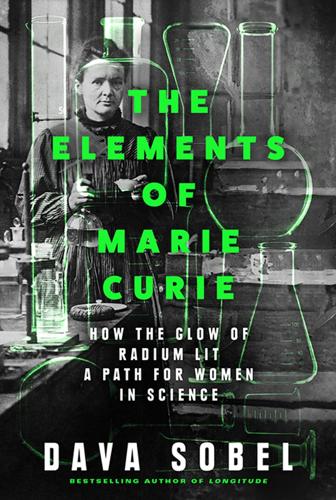
The Elements of Marie Curie
by
Dava Sobel
Published 20 Aug 2024
Excitement surrounding the radioelements bubbled over at the first International Congress on Physics, held in Paris in the summer of 1900 to coincide with the world’s fair. On the afternoon of August 8, in an amphitheater at the natural history museum, Pierre summarized all that he and Marie had accomplished to date, while also acknowledging the work of others whose insights and projects were expanding the general understanding of radioactivity. Ernest Rutherford, for example, a young New Zealander studying under J. J. Thomson at the Cavendish Laboratory in Cambridge, discovered through experiments with uranium that uranic rays were of two distinct types. The ones he dubbed “alpha rays” played the primary role in ionizing gases, but they did not travel far and could be blocked altogether by a sheet of paper.
…
“There were sonnets and poems on radium, letters from various inventors, letters from spirits, philosophical letters. Yesterday an American wrote to ask if I would allow him to baptize a racehorse with my name.” In the scientific journals, radioactivity rattled the foundations of physics and called concepts such as “atom” and “element” into question. Ernest Rutherford, who had moved from the Cavendish Laboratory to McGill University in Canada, conducted experiments with a new colleague there and proposed that radioactive atoms changed their identity when they emitted their alpha or beta rays. Those rays, Rutherford maintained, were actually subatomic particles.
…
Something had jumped out of the Crookes tube to excite the zinc sulfide, and Roentgen named the something X-rays. In France, Henri Becquerel, while trying to replicate some of Roentgen’s experiments, discovered uranic rays in 1896. That same year, J. J. Thomson at the Cavendish Laboratory in Cambridge, along with his student Ernest Rutherford, demonstrated that X-rays split the air into electrically charged ions, allowing electric current to flow. Continuing alone, Rutherford showed that uranic rays did the same. By the electrical conductivity of air, Mme. Curie had made the precise measurements that led to the discovery of two new elements, polonium and radium, plus a term to describe them: radioactive.

Collider
by
Paul Halpern
Published 3 Aug 2009
Thomson, Recollections and Reflections (New York: Macmillan, 1937), pp. 138-139. 4 Ernest Rutherford to Mary Newton, August 1896, in Wilson, Rutherford, Simple Genius, pp. 122-123. 5 Ernest Rutherford to Mary Newton, February 21, 1896, in ibid., p. 68. 6 Thomson, Recollections and Reflections, p. 341. 7 Arthur S. Eve, in Lawrence Badash, “The Importance of Being Ernest Rutherford,” Science 173 (September 3, 1971): 871. 8 Chaim Weizmann, Trial and Error (New York: Harper & Bros., 1949), p. 118. 9 Ibid. 10 Ernest Rutherford, “The Development of the Theory of Atomic Structure,” in Joseph Needham and Walter Pagel, eds., Background to Modern Science (Cambridge: Cambridge University Press, 1938), p. 68. 11 Ibid. 12 Ernest Rutherford to B.
…
Revealing the atom’s structure would require a special kind of sledgehammer and the steadiest of arms to wield it. 3 Striking Gold Rutherford ’s Scattering Experiments Now I know what the atom looks like! —ERNEST RUTHERFORD, 1911 In a remote farming region of the country the Maoris call Aotearoa, the Land of the Long White Cloud, a young settler was digging potatoes. With mighty aim, the boy broke up the soil and shoveled the crop that would support his family in troubling times. Though he had little chance of striking gold—unlike other parts of New Zealand, his region didn’t have much—he was nevertheless destined for a golden future. Ernest Rutherford, who would become the first to split open the atom, was born to a family of early New Zealand settlers.
…
Eve, in Lawrence Badash, “The Importance of Being Ernest Rutherford,” Science 173 (September 3, 1971): 871. 8 Chaim Weizmann, Trial and Error (New York: Harper & Bros., 1949), p. 118. 9 Ibid. 10 Ernest Rutherford, “The Development of the Theory of Atomic Structure,” in Joseph Needham and Walter Pagel, eds., Background to Modern Science (Cambridge: Cambridge University Press, 1938), p. 68. 11 Ibid. 12 Ernest Rutherford to B. Boltwood, December 14, 1910, in L. Badash, Rutherford and Boltwood (New Haven, CT: Yale University Press, 1969), p. 235. 13 Ernest Rutherford to Niels Bohr, March 20, 1913, in Niels Bohr, Collected Works, vol. 2 (Amsterdam: North Holland, 1972), p. 583. 14 Werner Heisenberg, Physics and Beyond: Encounters and Conservations (New York: Harper & Row, 1971), p. 61. 15 Niels Bohr, in Martin Gardner, The Whys of a Philosophical Scrivener (New York: Quill, 1983), p. 108. 4.
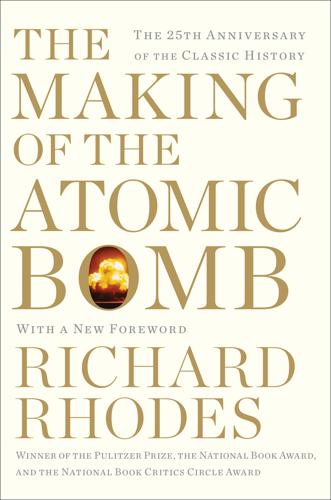
The Making of the Atomic Bomb
by
Richard Rhodes
Published 17 Sep 2012
He was familiar with the long record of outstanding work in the general field of radioactivity of the German chemist Otto Hahn and the Austrian physicist Lise Meitner, who made a productive team at the Kaiser Wilhelm Institute for Chemistry. No doubt he was also alert as always to the peculiar tension in the air that signaled the possibility of new developments. The nuclei of some light atoms could be shattered by bombarding them with atomic particles; that much the great British experimental physicist Ernest Rutherford had already demonstrated. Rutherford used one nucleus to bombard another, but since both nuclei were strongly positively charged, the bombarded nucleus repelled most attacks. Physicists were therefore looking for ways to accelerate particles to greater velocities, to force them past the nucleus’ electrical barrier.
…
A discovery in physics opened the field to new possibilities while discoveries Szilard made in literature and utopianism opened his mind to new approaches to world salvation. On February 27, 1932, in a letter to the British journal Nature, physicist James Chadwick of the Cavendish Laboratory at Cambridge University, Ernest Rutherford’s laboratory, announced the possible existence of a neutron. (He confirmed the neutron’s existence in a longer paper in the Proceedings of the Royal Society four months later, but Szilard would no more have doubted it at the time of Chadwick’s first cautious announcement than did Chadwick himself; like many scientific discoveries, it was obvious once it was demonstrated, and Szilard could repeat the demonstration in Berlin if he chose.61, 62) The neutron, a particle with nearly the same mass as the positively charged proton that until 1932 was the sole certain component of the atomic nucleus, had no electric charge, which meant it could pass through the surrounding electrical barrier and enter into the nucleus.
…
And may have thought again of the atomic bombs of Wells’ earlier work, of Wells’ Open Conspiracy and his own, of Nazi Germany and its able physicists, of ruined cities and general war.77 Without question Szilard read The Times of September 12, with its provocative sequence of headlines: THE BRITISH ASSOCIATION BREAKING DOWN THE ATOM TRANSFORMATION OF ELEMENTS Ernest Rutherford, The Times reported, had recited a history of “the discoveries of the last quarter of a century in atomic transmutation,” including: THE NEUTRON NOVEL TRANSFORMATIONS All of which made Szilard restive. The leading scientists in Great Britain were meeting and he wasn’t there. He was safe, he had money in the bank, but he was only another anonymous Jewish refugee down and out in London, lingering over morning coffee in a hotel lobby, unemployed and unknown.
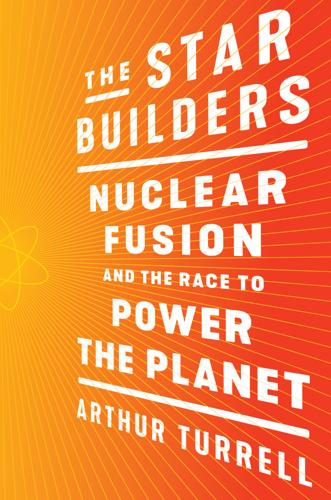
The Star Builders: Nuclear Fusion and the Race to Power the Planet
by
Arthur Turrell
Published 2 Aug 2021
Bohr, “The Rutherford Memorial Lecture 1958: Reminiscences of the Founder of Nuclear Science and of Some Developments Based on His Work,” Proceedings of the Physical Society 78 (1961): 1083–115; R. H. Cragg, “Lord Ernest Rutherford of Nelson (1871–1937),” Royal Institute of Chemistry Reviews 4 (1971): 129–45; M. Kumar, “The Man Who Went Nuclear: How Ernest Rutherford Ushered in the Atomic Age,” Independent (2011), https://www.independent.co.uk/news/science/the-man-who-went-nuclear-how-ernest-rutherford-ushered-in-the-atomic-age-2230533.html; J. K. Laylin, Nobel Laureates in Chemistry, 1901–1992 (Chemical Heritage Foundation, 1993); H. R. Robinson, “Rutherford: Life and Work to the Year 1919, with Personal Reminiscences of the Manchester Period,” Proceedings of the Physical Society 55 (1943): 161–82; M.
…
—Arthur Eddington, “The Internal Constitution of the Stars,” 19201 This book is about scientists’ attempts to unlock energy from within the atom, and the star builders owe a great debt to the person who did more than anyone else to show the world this was possible. That person is the physicist Ernest Rutherford, who, in the first decades of the twentieth century, discovered the structure of the atom, carried out the first nuclear reaction (without realizing it), and led the teams that discovered both nuclear fusion and nuclear fission reactions. But even the first ever artificial fusion experiment performed by Rutherford would show that achieving net energy gain was going to be very, very hard. Ernest Rutherford was a brilliant, innovative, and hardworking physicist whose character and creativity won him many successes throughout his career.
…
It’s like if you dropped tennis balls from a bridge down onto two opposing lanes of motorway traffic: you’d get a much wider range of tennis ball speeds from fast moving traffic than you would from stationary traffic.I This interaction between light and electrons is called Thomson scattering after J. J. Thomson, Ernest Rutherford’s first boss in the UK.3 Unlike the National Ignition Facility, JET only uses lasers to diagnose what’s going on during experiments. The lasers don’t play a role in creating the conditions for fusion. To bring ordinary hydrogen isotopes to the extraordinary plasma temperatures required of JET isn’t easy.

E=mc2: A Biography of the World's Most Famous Equation
by
David Bodanis
Published 25 May 2009
If the equation and its operations had stayed solely in Einstein’s hands, our book would simply have continued with Einstein’s life after 1905. But pretty quickly after this great discovery his interests shifted to other topics; his personal story fades from the book, and in- preface stead we pick up with other physicists: more empirical ones now, such as the booming, rugby-playing Ernest Rutherford, and the quiet, ex-POW James Chadwick, who together helped reveal the detailed structures within the atom that could—in principle—be manipulated to allow the great power the equation spoke of to come out. In any other century those theoretical discoveries might have taken a long time to be turned into practical reality, but the details of how Einstein’s equation might be used became clear early in 1939, just as the twentieth century’s greatest war was beginning.
…
Into the Atom E=mc 8 University students in 1900 were taught that ordinary matter—bricks and steel and uranium and everything else—was made of smaller particles, called atoms. But what atoms were made of no one knew. One common view was that they were something like tough and shiny ball bearings: mighty glowing entities that no one could see inside. It was only with the research of Ernest Rutherford, a great, booming bear of a man working at England’s Manchester University, in the period around 1910, that anyone got a clearer view. Rutherford was at Manchester, rather than at Oxford or Cambridge, not just because he was from rural New Zealand, and spoke with a common man’s accent. If a research assistant was self-effacing enough, that could be overlooked.
…
He’d even suggested creating a joint-venture business to earn money from one of his inventions—and that was a mortal sin. Yet the reason he became the scientist who got the first clear glimpse of the inside of atoms was, to a large extent, because his heightened awareness of dis- 93 2 the early years Ernest Rutherford photograph by c. e. wynn-williams. aip emilio segrè visual archives crimination made him the kindest leader of men. The bluff booming exterior was just window dressing. He was good in nurturing skilled assistants, and his key experiment was monitored by a young man who would end up perfecting a most useful mobile radiation detection unit, of Rutherford’s suggested design: the audibly clicking counter was to be Hans Geiger’s claim to fame.
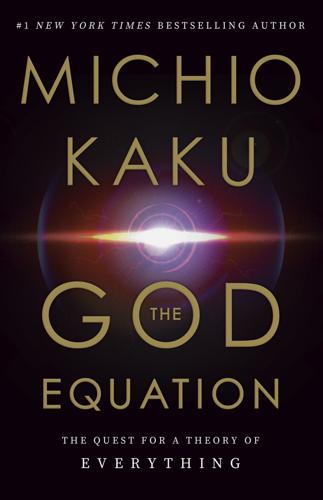
The God Equation: The Quest for a Theory of Everything
by
Michio Kaku
Published 5 Apr 2021
(But this still left open a mystery: Where does the magnetic field of a bar magnet come from, since there is nothing moving or spinning in it? We will return to this mystery later.) Today, all the known forces of the universe are expressed in the language of fields first introduced by Faraday. Given Faraday’s immense contribution to initiating the electric age, physicist Ernest Rutherford declared him the “greatest scientific discoverer of all time.” Faraday was also unusual at least for his time because he loved to engage the public, and even children, in his discoveries. He was famous for his Christmas Lectures, where he would invite everyone to the Royal Institution in London to witness dazzling displays of electrical wizardry.
…
Since radioactive decay could take place over billions of years, it meant that the Earth’s core could be heated by the decay of uranium, thorium, and other radioactive elements. So the enormous power of shattering earthquakes, thundering volcanoes, and slow, grinding continental drift all originate from the nuclear force. In 1910, Ernest Rutherford put a piece of glowing radium in a lead box with a minuscule hole. A tiny beam of radiation emerged from the hole, aimed at a thin sheet of gold. It was expected that the atoms of gold would absorb the radiation. To his shock, he found that the beam from the radium went right through the sheet, as if it weren’t there.
…
What is left are three particles: the proton; the electron; and another mysterious new particle, the anti-neutrino, which we will discuss later. Studying the nuclear force is exceedingly difficult, since the nucleus is about one hundred thousand times smaller than an atom. To probe inside a proton, physicists needed a new tool, the particle accelerator. We saw how years before Ernest Rutherford used the rays emitted by radium encased in a lead box to discover the nucleus. To explore deeper inside the nucleus, physicists needed even more powerful sources of radiation. In 1929, Ernest Lawrence invented the cyclotron, the forerunner of the giant particle accelerators of today.
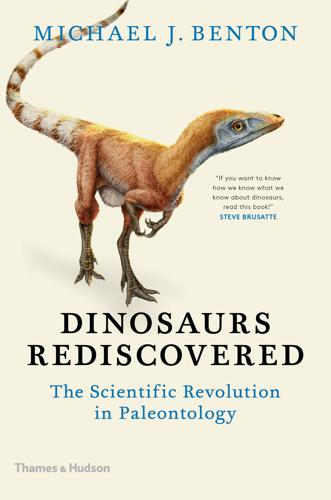
Dinosaurs Rediscovered
by
Michael J. Benton
Published 14 Sep 2019
In any case, what could Professors Osborn and Van Valen actually have done in order to test what Tyrannosaurus looked like or how the dinosaurs died out? Dinosaurs are long-dead animals, represented now by skeletons and isolated bones. The extinction of the dinosaurs happened 66 million years ago, so how on Earth could a scientist hope to investigate it scientifically? What is science? This was the point being made by Sir Ernest Rutherford – the New Zealand-born physicist who made his name at the University of Cambridge with the discovery of the half-life of radioactive elements – when he stated, around 1920, that ‘all science is either physics or stamp collecting’. Many hard-nosed physicists might agree with him even today. Nonetheless, he was ruling that much of chemistry, biology, geology, and the applied sciences in medicine and agriculture was not scientific.
…
At the strong end were mathematics and physics – his sciences, where experiments are designed and can be repeated with the same outcomes endlessly. These are the sciences where theory consists of equations that can be proved as universal laws, such as gravity or the electromagnetic theory of light. At the other end of the spectrum would be the so-called ‘soft sciences’ such as sociology, economics, and psychology. Sir Ernest Rutherford, Nobel-prize-winning physicist, and a man with strong views about what is (and is not) real science. I expect Rutherford was also thinking about the popularity of nature among the Victorians, and how the amateur botanists, sea-pool scourers, and fossil-hunters went out at weekends to collect stuff.
…
This is the basis of the engineering design of the structure before it is completed, and we live in skyscrapers and fly in aircraft designed this way, trusting that the calculations were correct. Therefore, if we use the same approach to study a dinosaur skull or leg, we should accept the results as true. Inside the computer is a perfect functioning model of the extinct animal. This is a pretty amazing claim – that palaeobiology is testable science. Even Ernest Rutherford might have accepted that we can now turn some parts of palaeobiology into rigorous, hard science. The revolution I have lived through a revolution. When I started as a student some forty years ago, palaeobiology was a practical subject aimed at solving problems for the oil industry – especially relevant in the town where I grew up, Aberdeen.

Neutrino Hunters: The Thrilling Chase for a Ghostly Particle to Unlock the Secrets of the Universe
by
Ray Jayawardhana
Published 10 Dec 2013
He reckoned that the salts had emitted some form of radiation, and through a series of follow-up investigations, he showed that this radiation was an intrinsic property of the element uranium. Becquerel’s curious finding intrigued a number of scientists. At Cambridge University, J. J. Thomson, best known for his discovery of the electron, steered the attention of his graduate student Ernest Rutherford to the new discovery. Born in rural New Zealand as the fourth of twelve children to a family of farmers, Rutherford excelled at university and experimented with a radio receiver about the same time as Marconi. He came to England, having won a scholarship, to pursue doctoral research on radio waves under Thomson’s guidance.
…
Neutrino hunters are about to take center stage for the dramatic next chapter of their epic adventure. * You can listen to a sampling of the sound recordings online at http://listentothedeep.com/acoustics/index.html. TIME LINE 1896: Henri Becquerel discovered radioactivity. 1897–1908: Experiments by Ernest Rutherford, the Curies, Paul Villard, Walter Kaufmann, and Hans Geiger revealed that radioactivity produced three types of emissions: alpha particles (equivalent to helium nuclei), beta particles (electrons), and gamma rays (a highly energetic form of electromagnetic radiation). 1898: Marie and Pierre Curie identified radium and polonium and showed that radioactivity is not limited to uranium.
…
Enz, No Time to Be Brief: A Scientific Biography of Wolfgang Pauli (New York: Oxford University Press, 2002). 31 “I have around me,” … “Whoever studies this”: As quoted in Arthur I. Miller, Deciphering the Cosmic Number: The Strange Friendship of Wolfgang Pauli and Carl Jung (New York: Norton, 2009). 35 “If it had been a bullfighter”: As quoted in Enz, No Time to Be Brief. 36 Ernest Rutherford: There is a brief biographical sketch online at www.nobelprize.org/nobel_prizes/chemistry/laureates/1908/rutherford-bio.html, and his 1908 Nobel Prize Lecture, “The Chemical Nature of Alpha Particles from Radioactive Substances,” is available online at www.nobelprize.org/nobel_prizes/chemistry/laureates/1908/rutherford-lecture.html. 37–38 “It would, nevertheless”… “My husband and I”… “One of our joys”: Quoted in Marie Curie, Pierre Curie, with Autobiographical Notes (New York: Macmillan, 1923); online at http://etext.virginia.edu/toc modeng/public/CurPier.html. 39 “We may say”: Niels Bohr delivered the Faraday Lecture to the Fellows of the Chemical Society in London on May 8, 1930, and it was published as “Chemistry and the Quantum Theory of Atomic Constitution” in the Journal of the Chemical Society (1932): 349–84. 40 “Do you intend”: As quoted in Gino Segrè, Faust in Copenhagen: A Struggle for the Soul of Physics (New York: Viking, 2007), 194. 40 “What if someone”: As quoted in Miller, Deciphering the Cosmic Number. 40 “Dear Radioactive Ladies and Gentlemen”: The original German text of the letter is available at the Pauli Archive at CERN and online at http://cds.cern.ch/record/83282/files/meitner_0393.pdf. 42 “I have done a terrible thing”: As far as I could find, this quote attributed to Pauli was first reported by Fred Hoyle, who heard it from fellow astronomer Walter Baade.
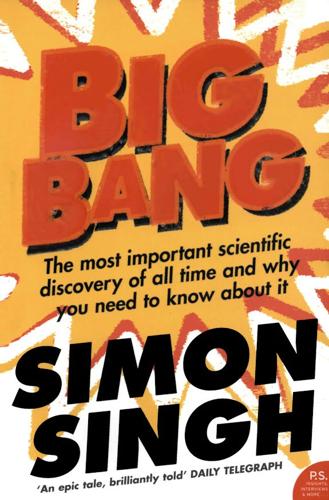
Big Bang
by
Simon Singh
Published 1 Jan 2004
For example, the column on the far right contains the so-called noble gases (helium, neon, etc.), whose atoms very seldom react with other atoms to form molecules. Despite its role in helping to understand how the elements reacted with one another, the periodic table did not offer any insight into the cause of radioactivity. One of the physicists drawn to this problem was a New Zealander, Ernest Rutherford. He was much loved by his colleagues and students, but he was also known as a gruff authoritarian who was prone to temper tantrums and displays of arrogance. For example, according to Rutherford, physics was the only important science. He believed that it provided a deep and meaningful understanding of the universe, whereas all the other sciences were preoccupied with mere measuring and cataloguing.
…
He believed that it provided a deep and meaningful understanding of the universe, whereas all the other sciences were preoccupied with mere measuring and cataloguing. He once stated: ‘All science is either physics or stamp collecting.’ This blinkered comment backfired when the Nobel Committee awarded him the 1908 chemistry prize. Figure 68 The portrait of Ernest Rutherford was taken when he was in his mid-thirties. He had a disdain for chemists, which was not uncommon among physicists. For example, Nobel physicist Wolfgang Pauli was angry when his wife left him for a chemist: ‘Had she taken a bullfighter then I would have understood, but an ordinary chemist…’ The second photograph shows a more mature Rutherford with his colleague John Ratcliffe at the Cavendish Laboratory.
…
However, Geiger and Marsden were astonished by what they saw. They did indeed detect alpha particles that had apparently recoiled off the gold atoms. Only 1 in every 8,000 alpha particles was bouncing back, but this was one more than Thomson’s model predicted. The results of the experiment seemed to contradict the plum pudding model. Figure 70 Ernest Rutherford asked his colleagues, Hans Geiger and Ernest Marsden, to study the structure of the atom using alpha particles. Their experiment used a radium sample to provide a source of alpha particles. A slit in a lead shield round the sample directed a beam of alpha particles onto a gold foil, and an alpha detector could be moved to different positions around the gold foil to monitor the deflection of alpha particles.
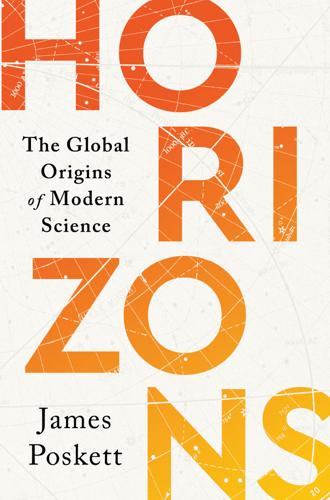
Horizons: The Global Origins of Modern Science
by
James Poskett
Published 22 Mar 2022
Nagaoka combined ideas from physics and chemistry, whilst drawing on his experience in both Europe and Japan. In doing so, he made one of the most important scientific breakthroughs in modern physics.93 Today, the discovery of the structure of the atom is usually attributed to the British physicist Ernest Rutherford. This is a prime example of the way in which non-European scientists have been written out of the history of modern science. Rutherford’s influential article, announcing the structure of the atom, was published in 1911, well after Nagaoka had published a series of articles on exactly the same topic.
…
What a problem that is going to be.’97 Wherever they studied, the scientists uncovered in this chapter all made major contributions to the development of the modern physical sciences. That was more often acknowledged at the time than in the present. Today, few outside of their home countries have heard of Jagadish Chandra Bose, Hantaro Nagaoka, or Peter Lebedev. But in the nineteenth century, leading European scientists took them very seriously. Ernest Rutherford cited Nagaoka in his famous paper on the structure of the atom, whilst Lord Kelvin admitted that it was Lebedev’s experiments on the pressure of light which had finally convinced him of the truth of James Clerk Maxwell’s theory of electromagnetism.98 Science in the nineteenth century was an industrial enterprise.
…
How could he do any proper scientific work now that he was separated from his laboratory? ‘I think I am beginning to go mad,’ he wrote, ‘I sit here all alone. And what for? I don’t understand.’ For a few months, Kapitza’s colleagues in Cambridge did what they could to help. The director of the Cavendish Laboratory, Ernest Rutherford, wrote to the Russian ambassador in London, whilst Paul Dirac travelled to Moscow in the hope of securing Kapitza’s release. In the end, it all came to nothing. Stalin had made up his mind. Russian scientists were to remain in Russia, where they could best serve the Soviet Union.12 After a while, Kapitza began to accept his new fate.
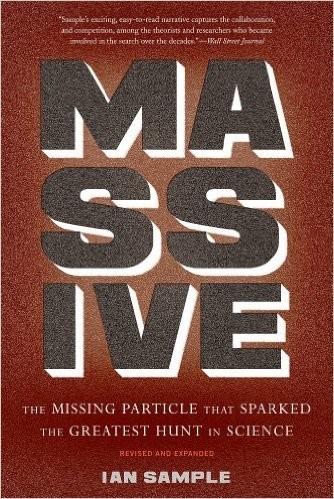
Massive: The Missing Particle That Sparked the Greatest Hunt in Science
by
Ian Sample
Published 1 Jan 2010
Emboldened by his discovery, Thomson proposed the “plum pudding” model of the atom, so called because it pictured atoms as positively charged balls of matter (the pudding) dotted with tiny negative electrons (the plums). It turned out that Thomson’s atomic pudding was not what Nature ordered.7 The idea fell apart when the New Zealand-born chemist and physicist Ernest Rutherford, based on his work with radium, announced the startling news that atoms were mostly empty. Instead, he said in 1911, almost all of an atom’s mass was bundled up in a central, positive nucleus. Later that decade, Rutherford probed the nucleus more deeply and found evidence for a new kind of particle within, the positively charged proton.
…
Newton’s laws work fine for big things like cars and cannonballs, but strange and nonintuitive rules govern the realm of particles. The building blocks of matter simply cannot be understood without understanding the rules of the quantum world. The structure of the atom as perceived today was still being fleshed out when quantum physics came on the scene. Proposals from Ernest Rutherford and the Danish physicist Niels Bohr suggested that atoms had a hard nucleus encircled by electrons in concentric orbits. In 1913, Bohr realized that a quantum interpretation of electron orbits allowed him to explain the colors of light absorbed and given off by hydrogen gas. It was a very specific piece of work, but it bolstered physicists’ confidence that the quantum was key to understanding the structure of matter.
…
Particle accelerators began life in the late 1920s as ramshackle devices built from spare parts, but they have been transformed over the decades into the largest and most complex machines on the planet. The earliest models produced beams of high-speed particles that were used to break open atomic nuclei. Eventually the machines were powerful enough to create entirely new particles from the energy released in the collisions. The rise of the machines can be traced back to Ernest Rutherford and other physicists who did similar experiments in the 1900s. Rutherford knew that radioactive materials produced streams of high-speed particles that could be used to study the structure of the atom. One common material he and his contemporaries used was radium. It emits alpha particles, which are made up of two protons and two neutrons, at speeds in excess of 20,000 kilometers per second.
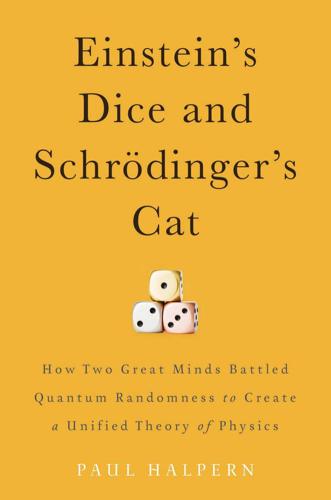
Einstein's Dice and Schrödinger's Cat: How Two Great Minds Battled Quantum Randomness to Create a Unified Theory of Physics
by
Paul Halpern
Published 13 Apr 2015
Surely no one complained about being underfed. Among the topics of discussion, radiation and atomic physics were all the rage. One of the speakers was German physicist Hans Geiger, inventor of the Geiger counter (proposed in rudimentary form in 1908) and a former coworker of famed New Zealand–born physicist Ernest Rutherford. In 1909, under Rutherford’s supervision at the University of Manchester, Geiger and Ernest Marsden had conducted an artful experiment designed to probe the atom. Bombarding gold foil with alpha particles (a type of radiation identical to helium ions), they discovered that almost all the particles passed unhindered through the foil.
…
Planck, whose voice would have carried much weight, refused to protest the Nazi moves openly, though privately he was aghast at the developments. Recruiters from universities in other countries soon realized that Germany’s loss could well be their gain. The first to recognize the opportunity was Oxford physicist Frederick Lindemann, who set out to snare some notables to beef up his department’s research. Thanks to J. J. Thomson, Ernest Rutherford, and others, Cambridge had leapt far ahead of Oxford in the sciences, and Lindemann hoped to make the situation at least somewhat more balanced. The haughty, posh, much-disliked Lindemann had set his eye on Einstein for a permanent position—but Einstein would commit only to brief yearly visits.
…
Punch, November 19, 1919, 422, cited in Alistair Sponsel, “Constructing a ‘Revolution in Science’: The Campaign to Promote a Favourable Reception for the 1919 Solar Eclipse Experiments,” British Journal for the History of Science 35, no. 4 (2002): 439. 2. Jagdish Mehra and Helmut Rechenberg, Erwin Schrödinger and the Rise of Wave Mechanics, Part 1: Schrödinger in Vienna and Zurich, 1887– 1925, The Historical Development of Quantum Theory, volume 5 (New York: Springer, 1987), 166. 3. George de Hevesy to Ernest Rutherford, October 14, 1913. Rutherford Papers, University of Cambridge, quoted in Ronald W. Clark, Einstein: The Life and Times (New York: World Publishing, 1971), 158. 242 Notes 4. Erwin Schrödinger, Space-Time Structure (Cambridge: Cambridge University Press, 1963), 1. 5. Albert Einstein, speech given in Kyoto, Japan, on December 14, 1922, quoted in Engelbert L.
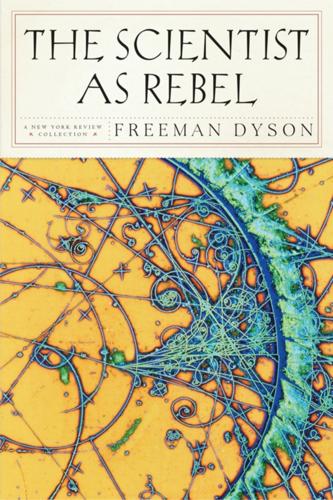
The Scientist as Rebel
by
Freeman Dyson
Published 1 Jan 2006
But most professionals consider the efforts of the amateurs trivial. After all, the professionals with their big instruments and big projects are solving the central problems of cosmology, while the amateurs are finding pretty little comets and asteroids. The view of the majority of professionals was expressed by the physicist Ernest Rutherford, the discoverer of the atomic nucleus, who said: “Physics is the only real science, the rest is butterfly-collecting.” For most professional astronomers, the large-scale structure of the universe is real science, while comets and asteroids are unimportant details of interest only to butterfly collectors.
…
I am a typical old conservative, out of touch with the new ideas and surrounded by young string theorists whose conversation I do not pretend to understand. In the 1920s, the golden age of quantum theory, the young revolutionaries were Werner Heisenberg and Paul Dirac, making their great discoveries at the age of twenty-five, and the old conservative was Ernest Rutherford, dismissing them with his famous statement, “They play games with their symbols but we turn out the real facts of Nature.” Rutherford was a great scientist, left behind by the revolution that he had helped to bring about. That is the normal state of affairs. Fifty years ago, when I was considerably younger than Greene is now, things were different.
…
No poem was read at the ceremony. 1. Edited by Alice K. Smith and Charles Weiner (Harvard University Press, 1980). 21 SEEING THE UNSEEN EVERY ATOM IS almost entirely made of empty space, with a tiny object called the nucleus and even tinier objects called electrons flying around inside it. Ernest Rutherford, a young New Zealander working in Manchester, England, discovered this fact about atoms in 1909. He shot fast particles at a thin film of gold and observed the way the particles bounced back. The pattern of the recoiling particles showed directly the internal structure of the atoms in the film.
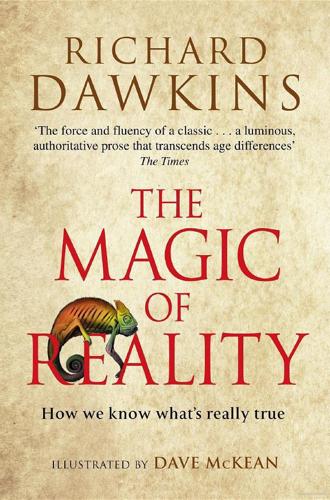
The Magic of Reality: How We Know What's Really True
by
Richard Dawkins
Published 3 Oct 2011
And yes, you can cut an atom into even smaller pieces – but what you then get is no longer the same element, for reasons we shall soon see. What is more, this is very difficult to do, and it releases an alarming quantity of energy. That is why, for some people, the phrase ‘splitting the atom’ has such an ominous ring to it. It was first done by the great New Zealand scientist Ernest Rutherford in 1919. Although we can’t see an atom, and although we can’t split it without turning it into something else, that doesn’t mean we can’t work out what it is like inside. As I explained in Chapter 1, when scientists can’t see something directly, they propose a ‘model’ of what it might be like, and then they test that model.
…
Either way, this process of proposing a model and then testing it – what we call the ‘scientific method’ – has a much better chance of getting at the way things really are than even the most imaginative and beautiful myth invented to explain what people didn’t – and often, at the time, couldn’t – understand. An early model of the atom was the so called ‘currant bun’ model proposed by the great English physicist J. J. Thomson at the end of the nineteenth century. I won’t describe it because it was replaced by the more successful Rutherford model, first proposed by the same Ernest Rutherford who split the atom, who came from New Zealand to England to work as Thomson’s pupil and who succeeded Thomson as Cambridge’s Professor of Physics. The Rutherford model, later refined in turn by Rutherford’s pupil, the celebrated Danish physicist Niels Bohr, treats the atom as a tiny, miniaturized solar system.
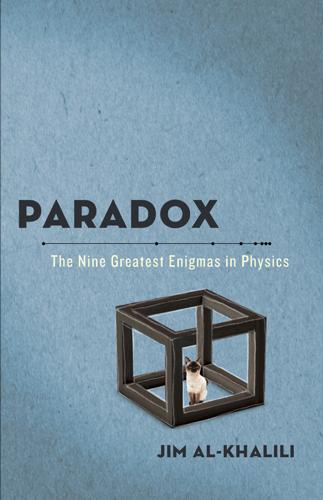
Paradox: The Nine Greatest Enigmas in Physics
by
Jim Al-Khalili
Published 22 Oct 2012
It was also known, thanks to the work of Einstein, that light could be made to behave either like a stream of particles or like a spread-out wave, depending on the sort of experiment that was set up and what property of light was being studied. This was strange enough—but evidence was growing that matter particles, such as electrons, could also exhibit such contradictory behavior. In 1916 Niels Bohr had returned triumphantly to Copenhagen from Manchester, where he had helped Ernest Rutherford develop a theoretical model of how electrons orbit the nucleus inside atoms. Within a few years he had set up a new institute in Copenhagen, funded by money from the Carlsberg Brewery. Then, with the 1922 Nobel Prize in Physics under his belt, he set about gathering around him some of the greatest scientific geniuses of the age.
…
In both cases, we cannot specify where the electron is exactly, but Schrödinger preferred to think of the electron as “really” spread out—until we look, that is. His version of atomic theory became known as “wave mechanics” and his now famous equation described how these waves evolve and behave over time in a fully deterministic way. Figure 9.2 Three pictures of the hydrogen atom with its single electron orbiting the nucleus (a) According to Ernest Rutherford (1911). (b) According to Werner Heisenberg (1925). (c) According to Erwin Schrödinger (1926). Today, we have learned to live with these two ways of viewing the quantum world: Heisenberg’s abstract mathematical way and Schrödinger’s wavy way. Both are taught to students and both seem to work fine, with quantum physicists learning to swap easily between the two pictures depending on the problem to hand.
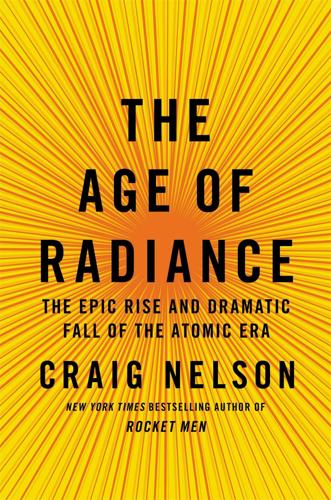
The Age of Radiance: The Epic Rise and Dramatic Fall of the Atomic Era
by
Craig Nelson
Published 25 Mar 2014
One of the school’s chemists could finally see their second element through the spectroscope, and around December 20 they named it: radium. After four years, forty tons of chemicals, and four hundred tons of water, on March 28, 1902, they produced one-tenth of a gram of radium chloride. In time, English chemist Frederick Soddy would work with New Zealand physicist Ernest Rutherford to discover the secret of uranic rays, the remarkable ability of radioactive elements to, through the spontaneous loss of subatomic particles, change into other elements, producing an emanation of alpha, beta, or gamma rays over the course of what they called a half-life. Subatomically bloated, these elements are forced to constantly shed neutrons or electrons until they achieve a stable, nonradioactive form and are at nucleic peace.
…
Manya Skłodowska Curie became the first woman in French history to be awarded a doctorate, in June of 1903. Sister Bronya, now practicing medicine in Poland, returned to celebrate. She insisted Marie buy a new dress for the occasion, and just as she had for her wedding, she got one that would work equally well as lab wear. Ernest Rutherford, the discoverer of the classical model of the atom (with electrons orbiting nuclei much as the planets revolve around the sun), visited from Canada and was astonished by the Curies’ lab in the cadaver hut, as well as by the celebratory garden party at Paul Langevin’s that evening, illuminated by radium vials—“The luminosity was brilliant in the darkness and it was a splendid finale to an unforgettable day”—and the sight of Pierre’s deeply swollen, burnt hands.
…
In a letter dated August 11, 1933, Szilard said, “I’m spending much money at present for traveling about and earn of course nothing and cannot possibly go on with this for very long. At the moment, however, I can be so useful that I cannot afford to retire into private life.” On September 13, Leo was walking the streets of London as he always did, in an absentminded haze, a man neither here, nor there, pondering Wells, Hitler, and especially Ernest Rutherford’s pronouncement in the Times the day before that “anyone who looked for a source of power in the transformation of the atoms was talking moonshine.” Nothing bothered Szilard more than hearing a scientist claim something to be impossible if that impossibility hadn’t categorically been proven. On Southampton Row in Bloomsbury, “as I was waiting for the light to change and as the light changed to green and I crossed the street, it suddenly occurred to me that if we could find an element which is split by neutrons and which would emit two neutrons when it absorbed one neutron, such an element, if assembled in sufficiently large mass, could sustain a nuclear chain reaction.

First Light: Switching on Stars at the Dawn of Time
by
Emma Chapman
Published 23 Feb 2021
Split a test group into two and give the groups differing objects (it doesn’t matter what: money or a lottery ticket, chocolate or a mug, a mug or a different mug); they will treasure what they have been given, showing a reluctance to trade independent of what they have been given.2 This is called the endowment effect. There’s something in us that needs to classify objects, own them and keep them. British physicist Ernest Rutherford famously said that ‘All science is either physics or stamp collecting’, implying derision on, for example, the practice in biology of classifying the animal and plant kingdoms into species, genera, families and so on. In the same era, the early 1900s, American astronomer Edwin Frost dreamed of a system dividing the stars into phyla and classes: a kingdom of stars.
…
The lack of iron is not the only marker of a metal-poor system. All the Segue 1 stars showed enhanced alpha process abundances. The alpha process is one route by which stars convert helium into heavier elements, by successively fusing helium nuclei. A helium nucleus is nicknamed the alpha particle, originating from when Ernest Rutherford, the British nuclear physicist, first differentiated between two types of radioactive particle: alpha (the helium nucleus comprising two protons and two neutrons) and beta (positron or electron). Oxygen, neon, magnesium and silicon are all alpha-process elements, or alpha-elements, because they are all created in this alpha process and their most stable isotopes are multiples of the helium nucleus (i.e. oxygen is four alphas, neon is five alphas).
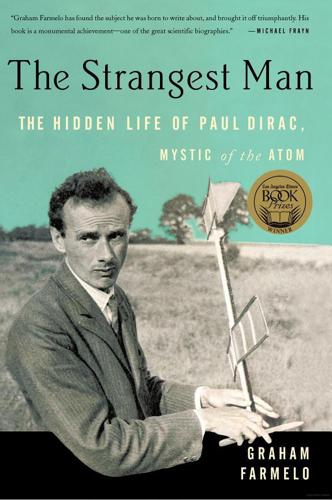
The Strangest Man: The Hidden Life of Paul Dirac, Mystic of the Atom
by
Graham Farmelo
Published 24 Aug 2009
He excelled at science, including chemistry, which he studied in a silence that he broke on one occasion, a fellow student later remembered, when the teacher made an error, which Dirac gently corrected.16 In the foul-smelling laboratories, Dirac learned how to investigate systematically how chemicals behave and learned that all matter is made of atoms. The famous Cambridge scientist Sir Ernest Rutherford gave an idea of the smallness of atoms by pointing out that if everyone in the world spent twelve hours a day placing individual atoms into a thimble, a century would elapse before it was filled.17 Although no one knew what atoms were made of or how they were built, chemists treated them as if they were as palpable as stones.
…
Unknown to most of his colleagues, Eddington had used his reputation to contrive the media hullabaloo that followed the announcement in November 1919 that the solar eclipse results supported the prediction of Einstein’s theory rather than Newton’s.16 Dirac attended his lectures and, like most people who first encountered him through his dazzling prose, was disappointed to find that he was an incoherent public speaker who had the habit of abandoning a sentence, as if losing interest, before moving on to the next one.17 But Dirac admired Eddington’s mathematical approach to science, which would become one of the most powerful influences on him. There was no love lost between Eddington and the other great figure of Cambridge science, the New Zealand-born Ernest Rutherford. The two men had sharply contrasting personalities and diametrically opposed approaches to physics. Whereas Eddington was introspective, mild-mannered and fond of mathematical abstraction, Rutherford was outgoing, down to earth, given to volcanic temper tantrums and dismissive of grandiose theorising.
…
Rutherford had no time for petty jealousy but was not above making a thinly disguised attack on his recently retired colleague Sir James Jeans, whose The Mysterious Universe had been a best-seller since it first appeared in the bookstores the month before. Rutherford was as down to earth and, at the same time, as snobbish as anyone in science. As the recorder of the dinner wrote: Sir Ernest Rutherford ‘deplored the writing of popular books by men who had been serious scientists, to satisfy the craving for the mysterious exhibited by the public’.49 This was a common opinion in Cambridge. A few months later, his idoliser C. P. Snow – a scientist about to become a writer – sneered at science popularisers for doing a job that was just too easy: ‘there is no argument and no appeal, just worshipper and worshipped’.
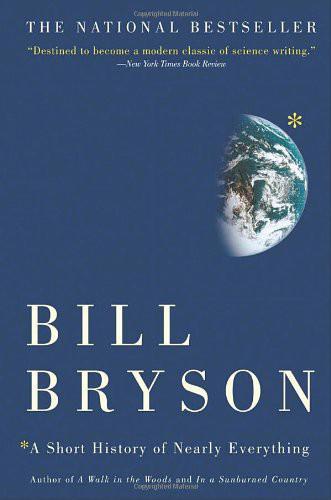
A Short History of Nearly Everything
by
Bill Bryson
Published 5 May 2003
As late as 1910, one of the most respected estimates, by the American George Becker, put the Earth's age at perhaps as little as 55 million years. Just when matters seemed most intractably confused, along came another extraordinary figure with a novel approach. He was a bluff and brilliant New Zealand farm boy named Ernest Rutherford, and he produced pretty well irrefutable evidence that the Earth was at least many hundreds of millions of years old, probably rather more. Remarkably, his evidence was based on alchemy—natural, spontaneous, scientifically credible, and wholly non-occult, but alchemy nonetheless. Newton, it turned out, had not been so wrong after all.
…
In the process of their work, the Curies also found two new elements—polonium, which they named after her native country, and radium. In 1903 the Curies and Becquerel were jointly awarded the Nobel Prize in physics. (Marie Curie would win a second prize, in chemistry, in 1911, the only person to win in both chemistry and physics.) At McGill University in Montreal the young New Zealand–born Ernest Rutherford became interested in the new radioactive materials. With a colleague named Frederick Soddy he discovered that immense reserves of energy were bound up in these small amounts of matter, and that the radioactive decay of these reserves could account for most of the Earth's warmth. They also discovered that radioactive elements decayed into other elements—that one day you had an atom of uranium, say, and the next you had an atom of lead.
…
It was Einstein who provided the first incontrovertible evidence of atoms' existence with his paper on Brownian motion in 1905, but this attracted little attention and in any case Einstein was soon to become consumed with his work on general relativity. So the first real hero of the atomic age, if not the first personage on the scene, was Ernest Rutherford. Rutherford was born in 1871 in the “back blocks” of New Zealand to parents who had emigrated from Scotland to raise a little flax and a lot of children (to paraphrase Steven Weinberg). Growing up in a remote part of a remote country, he was about as far from the mainstream of science as it was possible to be, but in 1895 he won a scholarship that took him to the Cavendish Laboratory at Cambridge University, which was about to become the hottest place in the world to do physics.
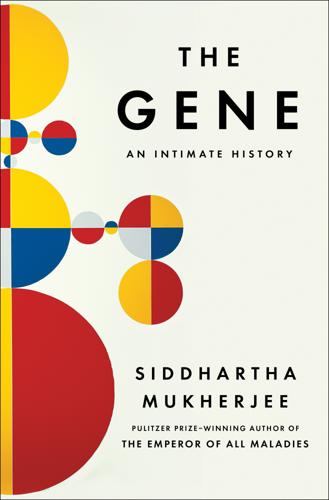
The Gene: An Intimate History
by
Siddhartha Mukherjee
Published 16 May 2016
Science [would be] ruined: Donald W. Braben, Pioneering Research: A Risk Worth Taking (Hoboken, NJ: John Wiley & Sons, 2004), 85. Among the early converts: Maurice Wilkins, Maurice Wilkins: The Third Man of the Double Helix: An Autobiography (Oxford: Oxford University Press, 2003). Ernest Rutherford: Richard Reeves, A Force of Nature: The Frontier Genius of Ernest Rutherford (New York: W. W. Norton, 2008). “Life . . . is a chemical incident”: Arthur M. Silverstein, Paul Ehrlich’s Receptor Immunology: The Magnificent Obsession (San Diego, CA: Academic, 2002), 2. Wilkins found an X-ray diffraction machine: Maurice Wilkins, correspondence with Raymond Gosling on the early days of DNA research at King’s College, 1976, Maurice Wilkins Papers, King’s College London Archives.
…
Among the early converts to the religion of DNA was a young physicist from New Zealand, Maurice Wilkins. The son of a country doctor, Wilkins had studied physics at Cambridge in the 1930s. The gritty frontier of New Zealand—far away and upside down—had already produced a force that had turned twentieth-century physics on its head: Ernest Rutherford, another young man who had traveled to Cambridge on scholarship in 1895, and torn through atomic physics like a neutron beam on the loose. In a blaze of unrivaled experimental frenzy, Rutherford had deduced the properties of radioactivity, built a convincing conceptual model of the atom, shredded the atom into its constituent subatomic pieces, and launched the new frontier of subatomic physics.
…
Mendel, too, had started out as a botanist and a naturalist and radically swerved that discipline by seeking the mechanism that drove heredity and variation. Both Darwin and Mendel observed the natural world to seek deeper causes behind its organization. II. Watson borrowed this memorable phrase from Ernest Rutherford, who, in one of his characteristically brusque moments, had declared, “All science is either physics or stamp collecting.” III. These libraries were conceived and created by Tom Maniatis in collaboration with Argiris Efstratiadis and Fotis Kafatos. Maniatis had been unable to work on gene cloning at Harvard because of concerns about the safety of recombinant DNA.
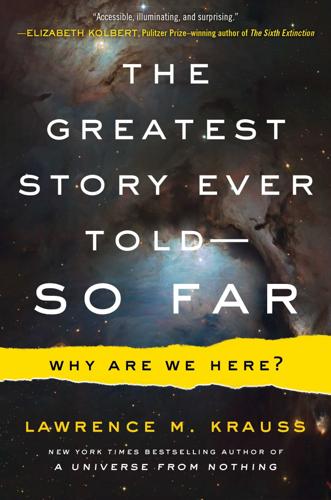
The Greatest Story Ever Told--So Far
by
Lawrence M. Krauss
Published 21 Mar 2017
Bothe was spectacularly lucky to be mentored by Planck and, shortly thereafter, by Hans Geiger, of Geiger counter fame. Geiger, in my mind, is one of the most talented experimental physicists to have been overlooked for a Nobel Prize. Geiger had begun his career by doing the experiments, with Ernest Marsden, that Ernest Rutherford utilized to discover the existence of the atomic nucleus. Geiger had just returned from England, where he’d worked with Rutherford, to direct a new laboratory in Berlin, and one of his first acts was to hire Bothe as an assistant. There Bothe learned to focus on important experiments, using simple approaches that yielded immediate results.
…
It is said that “close” only matters when tossing horseshoes or hand grenades, but the closeness in mass between the proton and the neutron matters a great deal. It is one of the key reasons we exist today. Henri Becquerel discovered radioactivity in uranium in 1896, and only three years later Ernest Rutherford discerned that radioactivity occurred in two different types, which he labeled alpha and beta rays. A year later gamma rays were discovered, and Rutherford confirmed them as a new form of radiation in 1903, when he gave them their name. Becquerel determined in 1900 that the “rays” in beta decay were actually electrons, which we now know arise from the decay of the neutron.
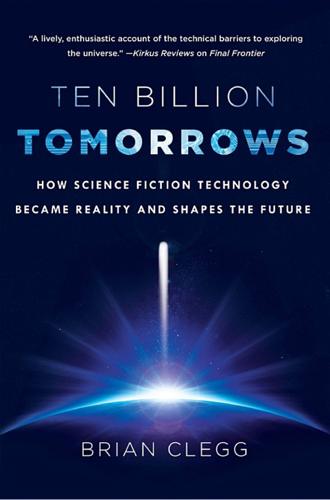
Ten Billion Tomorrows: How Science Fiction Technology Became Reality and Shapes the Future
by
Brian Clegg
Published 8 Dec 2015
That’s enough to get the hairs on the back of your neck rising, especially bearing in mind that this premonition came from the man who wrote The Time Machine, which is written in the first person by the time traveler. Just how remarkable The World Set Free is can be seen by putting the picture of the future it portrayed alongside a few realities from history. The concept of radioactivity only dated back to the turn of the century, and as late as 1933 Ernest Rutherford, a massive contributor to atomic theory, was quoted as saying, “The energy produced by the breaking down of the atom is a very poor kind of thing. Anyone who expects a source of power from the transformation of these atoms is talking moonshine.” In the next year Leo Szilard came up with the concept of a nuclear chain reaction that would make harnessing nuclear power possible; in 1942 Enrico Fermi produced the first working reactor under the bleachers of a disused football stadium in Chicago.
…
THROUGH A GLASS, DARKLY Arthur C. Clarke’s prediction of geostationary communication satellites was in Arthur C. Clarke, “Extra Terrestrial Relays,” Wireless World (October 1945): 305–8. The early predictions of nuclear war and atomic bombs came from H. G. Wells, The World Set Free (London: Corgi, 1976). Ernest Rutherford’s dismissal of atomic power was quoted in an article in the New York Herald Tribune, September 12, 1933. The identification of Verne’s error in comparing his work with that of H. G. Wells is pointed out by Adam Roberts in Vassili Christodoulou’s interview with Roberts, “In Praise of Sci-Fi,” IAI News, accessed September 5, 2014, iainews.iai.tv/articles/in-defence-of-sci-fi-auid-385.

Possible Minds: Twenty-Five Ways of Looking at AI
by
John Brockman
Published 19 Feb 2019
It’s as if a bus driver, with all of humanity as passengers, said, “Yes, I am driving toward a cliff—in fact, I’m pressing the pedal to the metal! But trust me, we’ll run out of gas before we get there!” The claim represents a foolhardy bet against human ingenuity. We have made such bets before and lost. On September 11, 1933, renowned physicist Ernest Rutherford stated, with utter confidence, “Anyone who expects a source of power from the transformation of these atoms is talking moonshine.” On September 12, 1933, Leo Szilard invented the neutron-induced nuclear chain reaction. A few years later he demonstrated such a reaction in his laboratory at Columbia University.
…
Consider trying to warn people in 1930 of a future nuclear arms race, when you couldn’t show them a single nuclear explosion video and nobody even knew how to build such weapons. Even top scientists can underestimate uncertainty, making forecasts that are either too optimistic—Where are those fusion reactors and flying cars?—or too pessimistic. Ernest Rutherford, arguably the greatest nuclear physicist of his time, said in 1933—less than twenty-four hours before Leo Szilard conceived of the nuclear chain reaction—that nuclear energy was “moonshine.” Essentially nobody at that time saw the nuclear arms race coming. Third, psychologists have discovered that we tend to avoid thinking of disturbing threats when we believe there’s nothing we can do about them anyway.
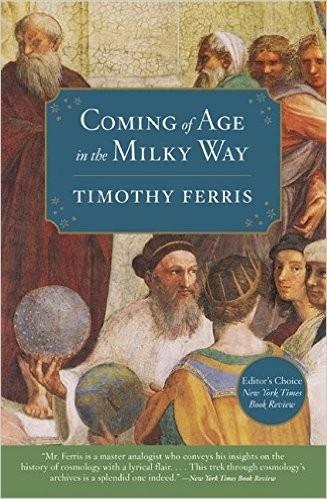
Coming of Age in the Milky Way
by
Timothy Ferris
Published 30 Jun 1988
He had detected radioactivity, the emission of subatomic particles by unstable atoms like those of uranium—which, Becquerel noted in announcing his results in 1896, was particularly radioactive. His work helped initiate a path of research that would lead, eventually, to Einstein’s realization that every atom is a bundle of energy. At McGill University in Montreal, the energetic experimentalist Ernest Rutherford, a great bear of a man whose roaring voice sent his assistants and their laboratory glassware trembling, found that radioactive materials can produce surprisingly large amounts of energy. A lump of radium, Rutherford established, generates enough heat to melt its weight in ice every hour, and can continue to do so for a thousand years or more.
…
J. Thomson discovers the electron. Time: 1898 Noteworthy Events: Marie and Pierre Curie isolate the radioactive elements radium and polonium. Time: 1900 Noteworthy Events: Max Planck proposes the quantum theory of radiation, the basis of quantum physics. Time: 1904 Noteworthy Events: Ernest Rutherford suggests that the amount of helium produced by the radioactive decay of minerals in rocks could be employed to measure the age of the earth. Time: 1905 Noteworthy Events: Albert Einstein publishes special theory of relativity, indicating that measurements of space and time are distorted at high velocity and implying that mass and energy are equivalent; in another paper he shows that light is composed of quanta.
…
Time: 1905 Noteworthy Events: Albert Einstein publishes special theory of relativity, indicating that measurements of space and time are distorted at high velocity and implying that mass and energy are equivalent; in another paper he shows that light is composed of quanta. Noteworthy Events: Jacobus Kapteyn, studying the proper motions of twenty-four hundred stars, finds evidence of what he calls “star streaming”—that stars in our neighborhood move in a preferred direction—an early clue to the rotation of our galaxy. Time: 1911 Noteworthy Events: Ernest Rutherford determines that most of the mass of atoms is contained in their tiny nuclei. Time: 1912 Noteworthy Events: Henrietta Swan Leavitt discovers a correlation between the absolute magnitude and the period of variability of Cepheid variable stars, opening the door to their use as intergalactic distance indicators.
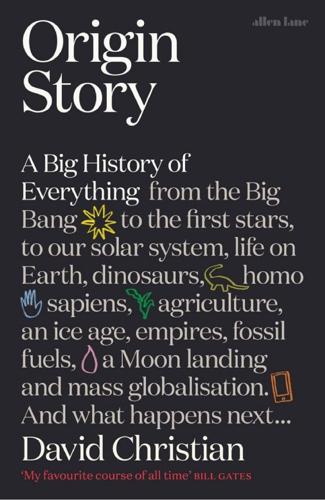
Origin Story: A Big History of Everything
by
David Christian
Published 21 May 2018
Each has a tiny nucleus in its center made up of protons (with positive charges) and neutrons (which have no charge) bound together by the strong nuclear force. The rest of the atom is mostly empty. Orbiting the nuclei at huge distances are clouds of electrons, roughly one to each proton in the nucleus. Early in the twentieth century, Ernest Rutherford, one of the pioneers of modern nuclear physics, described the nucleus of an atom as “the fly in the cathedral.” The scale Rutherford suggests is about right. But he was writing before the evolution of modern quantum physics, which showed that his metaphor is also misleading. Electrons are minuscule, with about 1/1836 the mass of a proton.
…
In atoms with large nuclei, such as uranium, the repulsive power of lots of positively charged protons can destabilize the nucleus until, eventually, it breaks down spontaneously, emitting high-energy electrons or photons or even whole helium nuclei. As chunks of the nucleus are ejected, the element is transformed into different elements with fewer protons. For example, uranium eventually breaks down to lead. In the first decade of the twentieth century, Ernest Rutherford realized that, even if you could not tell when a particular nucleus was about to break apart, radioactive breakdown was a very regular process when averaged over billions of particles. Every isotope of the same element (isotopes have the same number of protons but different numbers of neutrons) breaks down at different but regular rates, so it is possible to determine precisely how long it will take for half of the atoms in a given isotope to decay.
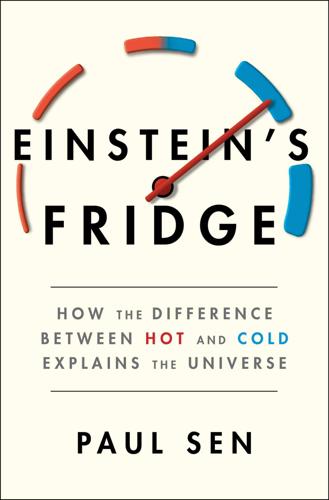
Einstein's Fridge: How the Difference Between Hot and Cold Explains the Universe
by
Paul Sen
Published 16 Mar 2021
Although it would be some decades before the mechanism of stellar nuclear fusion was understood, measurements of energy released by radioactive elements showed that a body as large as the sun could emit heat for billions of years. Furthermore, the new technique of radioactive dating revealed that the earth possessed rocks that must be of a similar age. One of the pioneers of the new radioactive science, Ernest Rutherford, gave a speech in 1904 at the Royal Institution in London, in which he declared, “The discovery of the radioactive elements… allows the time claimed by the geologist and biologist for the process of evolution.” Thomson, now aged seventy-nine, was unconvinced and remained so until his death three years later.
…
Marchant (1916), letter from Darwin to Wallace dated January 26, 1870. is “one of the gravest as yet advanced”: On the Origin of Species by Charles Darwin. that many philosophers are not as yet willing to admit: See above. “allows the time claimed by the geologist and biologist for the process of evolution”: Radiation and Emanation by Ernest Rutherford (1904). Chapter Eight: The Motion We Call Heat he was at pains to point out: See “On the Moving Force of Heat and the Laws Which Can Be Deduced Therefrom” by Rudolf Clausius, Annalen der Physik, 1850; and “The Nature of the Motion Which We Call Heat” by Rudolf Clausius, Annalen der Physik, 1857.
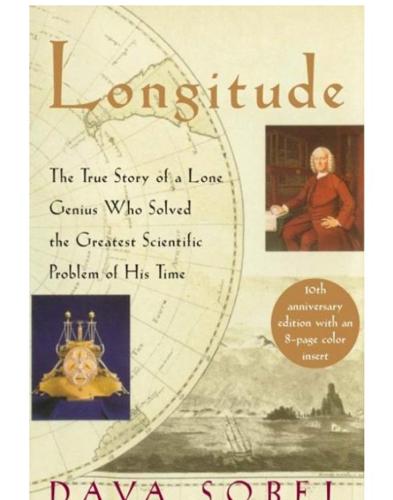
Longitude
by
Dava Sobel
Published 1 Jan 1995
His friend George Graham and other admiring members of the society insisted that Harrison leave his workbench long enough to accept the Copley Gold Medal on November 30, 1749. (Later recipients of the Copley Medal include Benjamin Franklin, Henry Cavendish, Joseph Priestley, Captain James Cook, Ernest Rutherford, and Albert Einstein.) Harrison’s Royal Society supporters eventually followed the medal, which was the highest tribute they could confer, with an offer of Fellowship in the Society. This would have put the prestigious initials F.R.S. after his name. But Harrison declined. He asked that the membership be given to his son William instead.

The Everything Blueprint: The Microchip Design That Changed the World
by
James Ashton
Published 11 May 2023
He had fallen in love with its ancient lanes and scholarly air aged 16, when his father, a wine seller, sent him there to learn English. The tall, elegant, blond-haired Hauser had returned to the city every summer, working as a research assistant in the Cavendish laboratory, Cambridge’s renowned physics centre where academic giants including Ernest Rutherford had advanced works on radioactivity and J.J. Thomson discovered the electron. When it came to decide where to study for his own physics PhD after graduating from Vienna University, there was no contest. Curry’s background differed. While at school he sourced TV components from rubbish dumps to make amplifiers for local rock bands and did not go to university, intent on making some money instead.
…
Chang knew Li, having set up an assembly and test plant in Taiwan for TI. He was something of a visionary who thought ITRI could become as celebrated for its cutting-edge research as Bell Labs was in the US. The plan was typical for Taiwan’s former finance minister, who was fond of the big picture. Li had studied radioactive substances under Ernest Rutherford at Cambridge University and later focused his work in the area of superconductivity. But his physics career had segued into politics and economics by the time he fled from the Chinese Communist Party to Taiwan in 1948. After a short spell as a Dutch colony, Taiwan had been administered by China’s Qing dynasty for almost two centuries, switching to Japanese control in 1895 at the culmination of the First Sino-Japanese War.
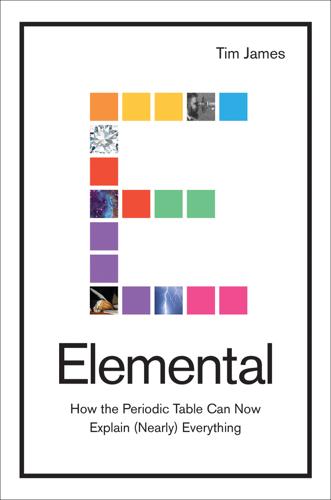
Elemental: How the Periodic Table Can Now Explain Everything
by
Tim James
Published 26 Mar 2019
They’re just stable structures that prefer not to be pulled apart. Electrons are the truly uncuttable particles and, as far as Thomson could figure, they were suspended in an oppositely charged dough. But science makes progress by disproving a hypothesis, not by proving it, and the plum-pudding idea was eventually torn to pieces by Thomson’s student Ernest Rutherford. Raised on a New Zealand sheep farm, Rutherford was known for rejecting expensive equipment and carrying out ludicrous experiments because nobody else was doing them. His unorthodox approach earned him the 1908 Nobel Prize in Chemistry, though, so people tended to let him get on with it. He won the prize for discovering that larger atoms could spit out tiny pieces, which he called alpha particles, that are much heavier than electrons and carry the opposite charge.
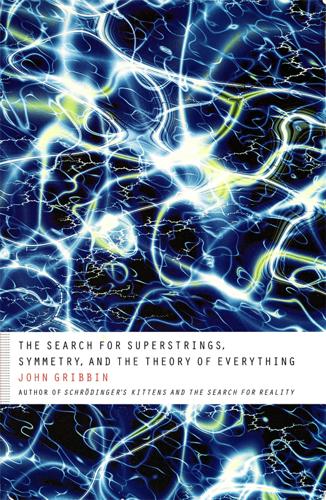
The Search for Superstrings, Symmetry, and the Theory of Everything
by
John Gribbin
Published 29 Nov 2009
While physicists were still coming to terms with the idea that bits could be chipped off from the ‘indivisible’ atoms, the discovery of radioactivity was both giving them a new tool with which to probe the structure of atoms themselves and (although it was not realized at first) demonstrating that particles much larger than electrons could break off from atoms. At the beginning of the twentieth century, the New Zealander Ernest Rutherford, working at McGill University in Montreal with Frederick Soddy, showed that radioactivity involves the transformation of atoms of one element into atoms of another element. In the process, the atoms emit one or both of two types of radiation, named (by Rutherford) alpha and beta rays. Beta rays, it turned out, were simply fast-moving electrons.
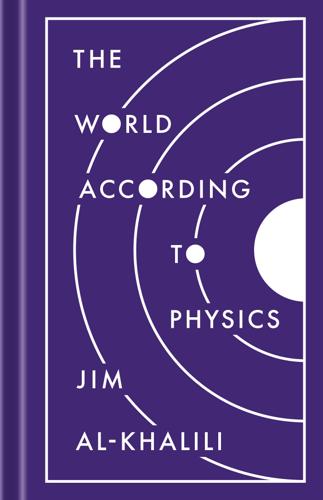
The World According to Physics
by
Jim Al-Khalili
Published 10 Mar 2020
And it is E = mc2 that lies behind half a century of accelerator laboratories in which beams of subatomic particles are smashed together at ever higher energies to create new matter—new particles—out of the energy of the collision. But there are rules associated with what sort of matter particles can be created from energy, and we will discuss some of them in the next section. THE BUILDING BLOCKS OF MATTER From the moment, over a century ago, when Ernest Rutherford, with the help of Hans Geiger and Ernest Marsden, probed the interior of atoms for the first time, by aiming alpha particles at a thin gold leaf and watching how many passed through it and how many bounced back, physicists have been obsessed with delving ever deeper into the subatomic world.
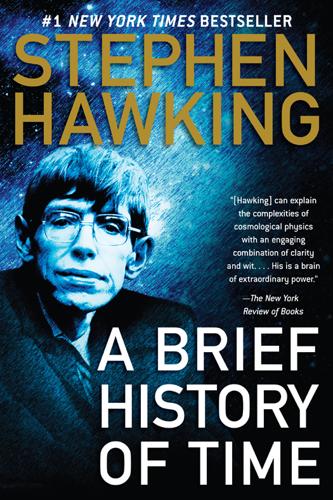
A Brief History of Time
by
Stephen Hawking
Published 16 Aug 2011
He used a setup rather like a modern TV picture tube: a red-hot metal filament gave off the electrons, and because these have a negative electric charge, an electric field could be used to accelerate them toward a phosphor-coated screen. When they hit the screen, flashes of light were generated. Soon it was realized that these electrons must be coming from within the atoms themselves, and in 1911 the New Zealand physicist Ernest Rutherford finally showed that the atoms of matter do have internal structure: they are made up of an extremely tiny, positively charged nucleus, around which a number of electrons orbit. He deduced this by analyzing the way in which alpha-particles, which are positively charged particles given off by radioactive atoms, are deflected when they collide with atoms.

Mr Five Per Cent: The Many Lives of Calouste Gulbenkian, the World's Richest Man
by
Jonathan Conlin
Published 3 Jan 2019
There were more than 150 lectures a term to attend, with exams at the end of the year. In July 1887 he also sat an external, state examination in magnetism and electricity, gaining an advanced certificate (first class), a stand-alone qualification.24 In later life Gulbenkian also claimed to have studied under Ernest Rutherford, the New Zealand-born pioneer of nuclear physics, as well as the great William Thomson, Lord Kelvin, who helped formulate the second law of thermodynamics.25 Thomson was showered with honours and even gave his name to a unit of measurement (the kelvin, used to measure absolute temperature). But Rutherford did not move to Britain until 1907 and Thomson never taught in London.
…
Jr 182 Rockefeller Foundation 287, 301, 307, 310, 319 Rodin, Auguste, Burghers of Calais bronze 157, Pl (b/w) Romania 60, 68, 73–5, 119, 130–31, 160, 235 Roosevelt, Franklin D. 254 Rosenberg, Alfred 248 Rothschild family (London branch) 106 Rothschild family (Paris branch) 248 bank 33, 106 oil companies 33, 34, 60–61, 67–72, 74 Rothschild, Alphonse de 94 Rothschild, Baron Edmond de 110, 124 Rothschild, Henri de 249, 288 Rothschild, Lionel de 150 Rothschild, Nathan ‘Natty’, 1st Baron 84 Roxana (US oil company) 108 Royal Artillery (British Army) 261 Royal Dutch Petroleum Company: foundation and early development 68 Asiatic and EPU joint ventures 68, 69, 70, 75 merger with Shell 69; see also Royal Dutch-Shell Royal Dutch-Shell: formation 69 purchase of EPU 75 partnership with Turkish Petroleum Company 92, 93–4, 169 early development of global operations 82, 104–9, 115 CSG acts as liaison with French government 109–111, 115–16, 125–31 and post-First World War settlement negotiations 120–22, 123, 135–7, 140 acquisition of control of El Águila (Mexican Eagle) 123–5 Soviet-controlled oil production operations 140–41, 181–2 Venezuelan Oil Concessions contract dispute and CSG’s break with company 146–54, 160–61, 194, 272 cartelisation with Anglo-Persian and Jersey Standard 160, 177 and Red Line Agreement negotiations with TPC 169, 173, 174 attempted speculative attack on 204–5 and IPC concessions outside Iraq 224–5 during Second World War 252, 253 and post-war Middle East oil concession negotiations 264, 265, 271 Royal Horticultural Society 114 Royzenman, Boris 190–91 Rubens, Sir Peter Paul, Hélène Fourment 189 Ruck, Arthur 156 Rudolf Lepke (auction house) 186 Rusk, Dean 307 Russell, George W. E., Social Silhouettes 65 Russian Civil War (1917–22) 112–13, 140 Russian Industrial and Mining Company 60, 61–3 Russo–Turkish War (1877–78) 19 Rutherford, Ernest Rutherford, 1st Baron 29 S S. & S. Gulbenkian (firm) 31, 41, 47–8, 79, 296 Sadi, Reşid 84 St Louis, Missouri 108 St Malo 102 St Petersburg (Leningrad) 18 Hermitage Museum 4, 139, 185–90 Saint-Germain-en-Laye 217 Sakhalin island 61 Salazar, António de Oliveira 244, 247, 288, 294 and establishment of Gulbenkian Foundation 306, 307, 308, 309, 312, 313, 314, 315, 317 Salonica (Thessaloniki) 81, 85 Samad Khan Mometazos Saltaneh 175, 176 Samuel, Marcus, 1st Viscount Bearsted 61, 68, 69, 74, 128, 129, 150, 230, 296 Samuel, Samuel 61, 74 Samuel, Walter, 2nd Viscount Bearsted 230 Samuel Pearson and Sons (engineering firm) 115, 122, 124, 150 Samuelson, Marie (later Gulbenkian) 219 San Remo Conference (1920) 121 Oil Agreement 118, 128, 130, 135, 136, 138, 164, 263 Sanson, Paul-Ernest 156–7 Sardar Assad Bakhtiari 175 Sardari, Abdol Hossein 248–9 Sarkis Gulbenkian Fils (firm) 48, 60, 64, 65 collapse 75–6, 79–80 Sassoon, Sir Philip 230 Saudi Arabia 1, 4, 174, 224, 225, 254, 256, 279; see also Aramco Schibaieff, S.
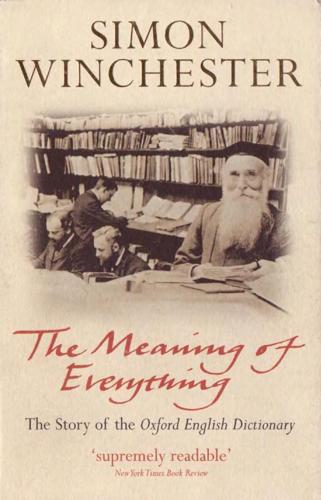
The Meaning of Everything: The Story of the Oxford English Dictionary
by
Simon Winchester
Published 1 Jan 2003
There were two bishops, three vice-chancellors, a dozen peers of the realm (including the Earls of Birkenhead, Elgin, Harrowby, and Crawford & Balcarres, the Viscount Devonport, the Lords Aldenham, Blanesburgh, Cecil, Percy, Queenborough, Wargrave, and Warrington of Clyffe), 27 knights of the realm (among them Sir Ernest Rutherford, splitter of atoms; Sir Arthur QuillerCouch, Cornishman and editor—under the pseudonym `Q'—of the then best-known of poetry anthologies; Sir Henry Newbolt, whose imperially minded, patriotically inspired poetry was known to every jingoist in the land; Sir Gerald Lenox-Conyngham, inventor, Triangulator and Surveyor of India, and first-ever Cambridge Reader in Geodesy; Sir Owen Seaman, the noted satirist, Punch editor and parodist who also `set great store by social activities, shot and swam well and had been Captain of Clare boats'; and Sir Charles Oman, who, despite being `in no sense a thinker', held the Chichele Chair in History at Oxford, was a worldrenowned numismatist, and wrote screeds of fascinations about Domesday Book).
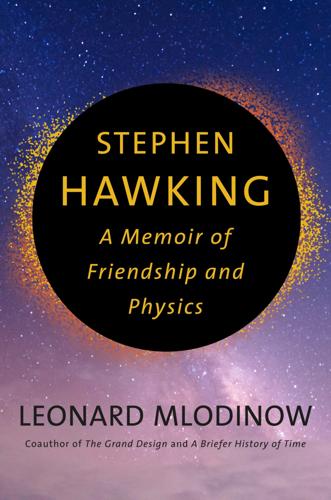
Stephen Hawking
by
Leonard Mlodinow
Published 8 Sep 2020
There was the courtyard where Newton stamped his foot to time the echoes, and measured the speed of sound; the laboratory built by James Clerk Maxwell, who puzzled out the secrets of electricity and magnetism, and where J. J. Thomson discovered the electron; the bar where Watson and Crick used to drink beer and talk genetics; the building where Ernest Rutherford—the man who unlocked the mystery of atomic structure—conducted his careful experiments. In Cambridge they are rightly proud of their tradition of science, and they call Oxford, which is more humanities oriented, “that other school.” The head of Stephen’s department told me that he, like Stephen, had been an undergraduate at Oxford, and his professors required them to write essays on scientific issues rather than just assigning the usual homework problems.

The Milky Way: An Autobiography of Our Galaxy
by
Moiya McTier
Published 14 Aug 2022
The particles they’ve found so far are grouped into matter particles (electrons, all the quarks and neutrinos, etc.) and force particles (photons, gluons, the bosons, etc.) that carry the electromagnetic, weak, and strong forces. Your scientists discovered the first one in 1897 (the electron, thanks to a rather accomplished physicist named Ernest Rutherford), but now it seems they’re finding new ones all the time, especially with that large ring they have in Switzerland where they smash hadrons together.2 Each of these particles is just a long-lived, discrete energy spike in its own so-called quantum field. I feel the need to stress that these are not actual, physical fields that you can directly manipulate in any way.

Atomic Accidents: A History of Nuclear Meltdowns and Disasters: From the Ozark Mountains to Fukushima
by
James Mahaffey
Published 15 Feb 2015
The new elements that the Curies had extracted at great labor from uranium ore, radium and polonium, would turn out to be two of the most dangerous substances in the natural world, and both are banned from all but the most critical industrial uses. Both are alpha-ray emitters. An alpha ray is a particle, consisting of a clump of two protons and two neutrons. It is literally the nucleus of a helium atom, and it breaks free of the radium nucleus, flying outward into space. In 1903 the physicist Ernest Rutherford calculated that the energy released from radium by a single alpha particle is a million times larger than the energy produced by any chemical combination of two molecules. The alpha particle has very limited range, and it is easily stopped by the uppermost layer of the skin, but the damage to healthy tissue to this shallow depth is significant.
…
Continuing his education at the Victoria University of Manchester, he moved to the Manchester College of Technology after an interruption by the First World War, in which he served as a signaler for the Royal Artillery. After two years studying electrical engineering, he moved on to St. John’s College, Cambridge, in 1924 and enjoyed the privilege of working with Lord Ernest Rutherford unwrapping the structure of the atom. In 1932 Cockcroft and the notable Irish physicist Ernest Thomas Sinton Walton stunned the scientific community by reducing lithium atoms into helium by bombarding them with accelerated protons. This accomplishment was made possible using their invention, the Cockcroft-Walton “ladder” voltage multiplier, which on an unusually dry day could produce an impressive 700,000 volts at the top electrode.
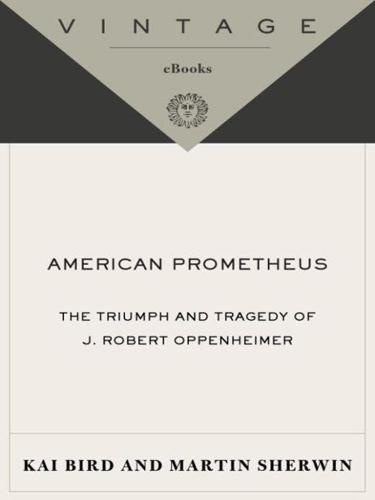
American Prometheus: The Triumph and Tragedy of J. Robert Oppenheimer
by
Kai Bird
and
Martin J. Sherwin
Published 18 Dec 2007
Robert could have stayed at Harvard—he was offered a graduate fellowship—but he already had loftier ambitions. He had graduated as a chemistry major, but it was physics that called him, and he knew that in the world of physics Cambridge, England, was “more near the center.” Hoping that the eminent English physicist Ernest Rutherford, celebrated as the man who had first developed a model of the nuclear atom in 1911, would take him under his wing, Robert persuaded his physics teacher Percy Bridgman to write a letter of recommendation. In his letter, Bridgman wrote candidly that Oppenheimer had a “perfectly prodigious power of assimilation” but that “his weakness is on the experimental side.
…
Page taught the boys to ride light, packing the bare minimum. One night on the trail Robert found himself out of food, and someone offered him a pipe to quell the pangs of hunger. Pipe tobacco and cigarettes quickly became thereafter a lifelong addiction. Upon his return to New York, Robert opened his mail to learn that Ernest Rutherford had rejected him. “Rutherford wouldn’t have me,” Oppenheimer recalled. “He didn’t think much of Bridgman and my credentials were peculiar.” In the event, however, Rutherford passed Robert’s application along to J. J. Thomson, Rutherford’s celebrated predecessor as director of Cavendish Laboratory.
…
By that time I was fully aware that it was an unusual time, that great things were afoot.” That spring, with his mental health on the mend, Oppenheimer worked steadily on what would become his first major paper in theoretical physics, a study of the “collision” or “continuous spectrum” problem. It was hard work. One day he walked into Ernest Rutherford’s office and saw Bohr sitting in a chair. Rutherford rose from behind his desk and introduced his student to Bohr. The renowned Danish physicist then asked politely, “How is it going?” Robert replied bluntly, “I’m in difficulties.” Bohr asked, “Are the difficulties mathematical or physical?” When Robert replied, “I don’t know,” Bohr said, “That’s bad.”
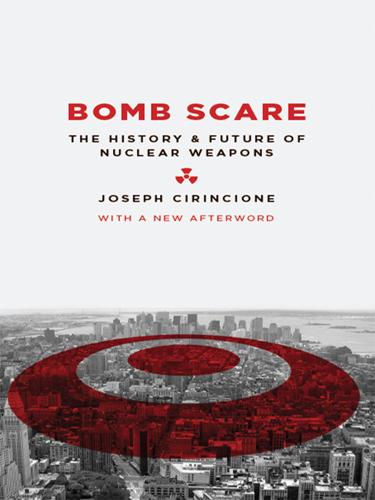
Bomb Scare
by
Joseph Cirincione
Published 24 Dec 2011
In about 400 BCE, Democritus reasoned that if you continuously divided matter, you would eventually get down to the smallest, undividable particle, which he called an atom, meaning “uncuttable.” By the beginning of the twentieth century, scientists realized the atom had an internal structure. In 1908 Ernest Rutherford discovered that atoms had a central core, or nucleus, composed of positively-charged protons, surrounded by the negatively charged electrons detected by J. J. Thompson eleven years earlier. In 1932 James Chadwick discovered that there were particles equal in weight to the proton in the nucleus, but without an electrical charge.
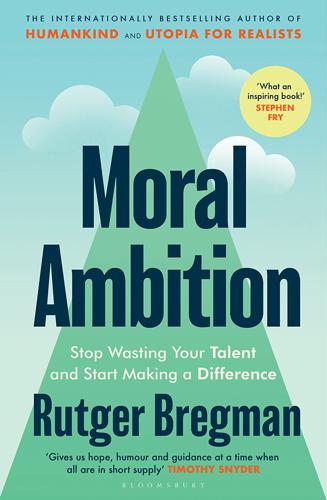
Moral Ambition: Stop Wasting Your Talent and Start Making a Difference
by
Bregman, Rutger
Published 9 Mar 2025
The computing pioneer, codebreaker, and war hero Alan Turing warned as early as 1950 about the dangers of a machine that surpasses our own capacity for thought.19 Artificial intelligence can be used for propaganda, censorship, and surveillance, and can make it easier to build a weapon of mass destruction. Worst-case scenario? AI gets away from us and we lose control. True, that’s only speculation, and we may be far removed from such danger. Then again, maybe not. Development of the atomic bomb went much faster than expected, too. The groundbreaking atomic physicist Ernest Rutherford asserted on 11 September 1933 that it would be impossible to generate usable energy by splitting atoms. A former student of Albert Einstein’s, the 35-year-old physicist Leó Szilárd, hit on the idea of a nuclear chain reaction the very next day. What’s the difference between the development of the atomic bomb and of artificial intelligence?
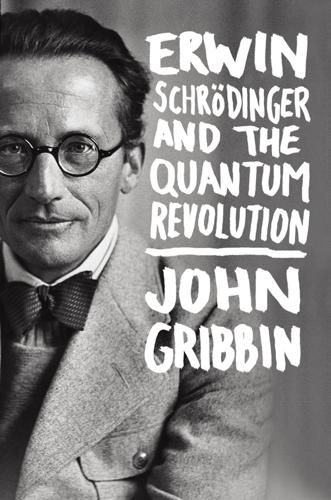
Erwin Schrodinger and the Quantum Revolution
by
John Gribbin
Published 1 Mar 2012
Thomson announced, in a lecture at the Royal Institution in London, the discovery that the radiation from a wire that is carrying an electric current in a vacuum tube is made up of a stream of electrically charged particles—what we now call electrons. The experimental study of radioactivity was swiftly carried forward by the Curies, Marie (1867–1934) and Pierre (1859–1906), at the Sorbonne; but the person who first appreciated what radioactivity involved, and then used radioactivity to probe the structure of atoms, was Ernest Rutherford (1871–1937), a New Zealander who worked in Canada and England. Rutherford arrived in England in 1895 and worked for a time under Thomson at the Cavendish Laboratory in Cambridge. Under Thomson’s influence, he became interested in atomic physics, and soon discovered that there are two kinds of radioactivity, one producing positively charged particles which he dubbed alpha radiation, and the other producing negatively charged particles which he called beta radiation.
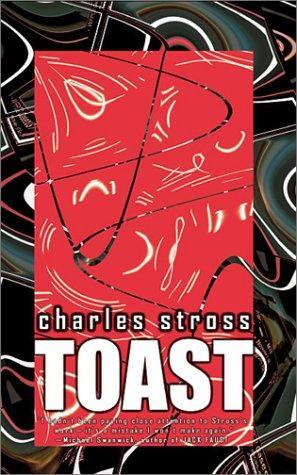
Toast
by
Stross, Charles
Published 1 Jan 2002
However, there appears to be a fundamental limit imposed by pressures greater than two thousand pounds per square inch; at this point the coffee grounds adhere to one another. The result can be a nasty steam explosion, as Frazer discovered to his cost. MacIntyre, for his part, is working with Sir Ernest Rutherford. He still maintains that Radium is the answer. And now it is my sad duty to record the effects the war has had upon our ranks. Marshall Joyce passed away three years ago, a victim of the U-boat attack on the liner Lusitania. His son, Marshall Jr., chose not to follow him into our ranks once he was appraised of the nature of our pursuit.
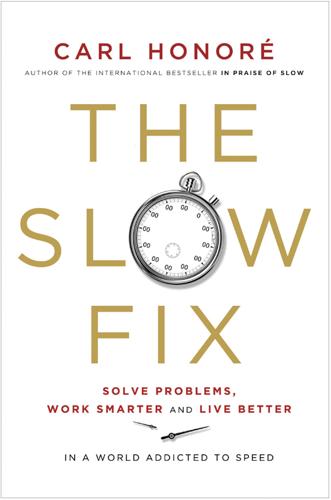
The Slow Fix: Solve Problems, Work Smarter, and Live Better in a World Addicted to Speed
by
Carl Honore
Published 29 Jan 2013
Many hours once spent in front of the television are now poured into blogging, gaming or other online pursuits that work our cognitive muscles in ways that watching re-runs of Friends never could. The fierce urgency of the problems now facing mankind also helps focus minds. Even the economic crisis that erupted in 2008 might turn out to have a silver lining: without the cash to splurge on the latest quick fix du jour, we have to be more critical and creative. Or as Ernest Rutherford, the father of nuclear physics, put it during a burst of austerity in the 1920s: “We’ve got no money, so we’ve got to think.” We are even starting to rewrite the capitalist rule-book. Britain and a half-dozen US states have changed corporate law to make it possible to create companies that put social goals ahead of profits, and several European countries are toying with similar legislation.
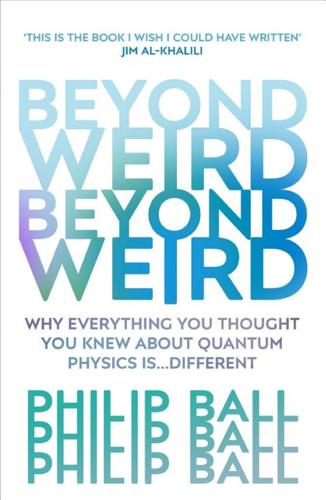
Beyond Weird
by
Philip Ball
Published 22 Mar 2018
Imagining the electron as a ‘wavy particle’ confined within a tiny box is a rather fruitful way of thinking about how atoms are constituted. One of the first successes of quantum theory was the model of the atom proposed by Bohr in 1913. It was adapted from an earlier picture suggested by the New Zealander Ernest Rutherford, in which he visualized these building blocks of matter as an extremely dense and positively charged central nucleus surrounded by negatively charged electrons. Rutherford and others refined this into a ‘planetary model’, where the electrons circulate in orbits like the planets around the Sun.
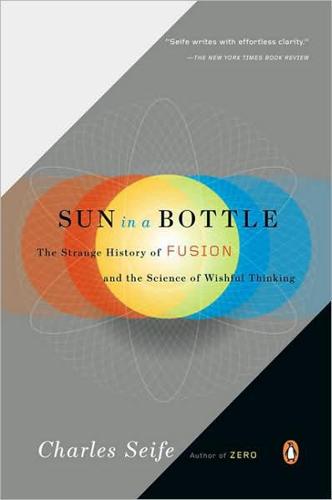
Sun in a Bottle: The Strange History of Fusion and the Science of Wishful Thinking
by
Charles Seife
Published 27 Oct 2009
Since an atom is, on balance, neither positively nor negatively charged, the positive and negative charges in the atom must be equal and opposite; the charges in the atom have to cancel each other out. This means that for every electron in an atom, there has to be something else in the atom that carries the equivalent positive charge. About a decade after the discovery of the electron, the physicist Ernest Rutherford found out where that equal and opposite charge sits. It resides in tiny, but extremely solid, nucleus at the very center of the atom. This nucleus is quite heavy, thousands of times heavier than an electron, so the nucleus of an atom had to be made of stuff very different from electrons. Rutherford soon figured out what that positively charged stuff was: he realized that the positive charge is cloistered inside a heavy particle known as a proton.
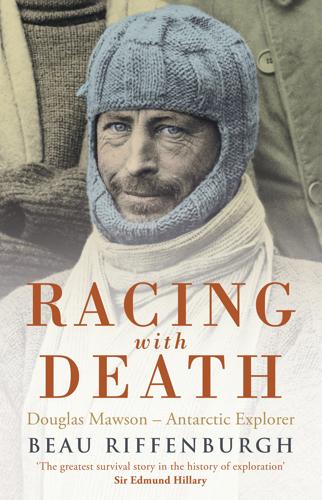
Racing With Death
by
Beau Riffenburgh
Published 25 Jul 2008
However, although it brought with it the rank of temporary captain, this was a dead-end position that any automaton could carry out, and it quickly became tedious. Its lack of intellectual stimulation was emphasised when compared to Mawson’s regular scholarly and social contacts with the likes of Nobel Prize winners Sir Ernest Rutherford and William H. Bragg; Sir J.J. Thomson, President of the Royal Society; Charles Parsons, the inventor of the steam turbine; and, of course, Kathleen Scott and her young son Peter. Despite being joined by Paquita in November 1916 – after she had left Patricia with relatives for what turned out to be the duration of the war – Mawson remained so frustrated by the lack of a challenge that he wrote to University Registrar Charles Hodge that he intended to return to Adelaide.
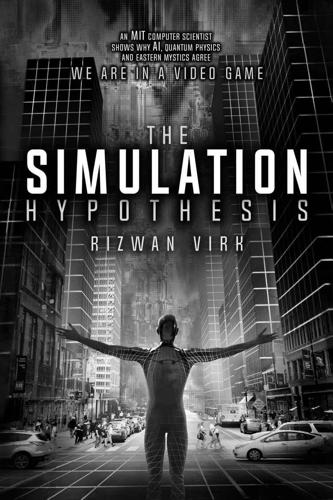
The Simulation Hypothesis
by
Rizwan Virk
Published 31 Mar 2019
It is a purely deterministic model—in order to know where things end up, you simply need to know where they started and which forces are acting on them. In this view of the world, the observer is just that—an observer that has no effect on the motions of the bodies being studied. This idea, which started in the macroscopic world, was extended to the microscopic world when Lord Ernest Rutherford discovered the nucleus of the atom. The idea was that there were basic building blocks, which were discreet and independent of one another, just like the planets in the solar system. The nucleus of an atom consisted of protons and neutrons, while electrons traveled around the nucleus in orbits, analogous to how planets orbited the sun.

The Myth of Artificial Intelligence: Why Computers Can't Think the Way We Do
by
Erik J. Larson
Published 5 Apr 2021
If the predicted year of true AI’s coming is false, too, another one can be forecast, a few decades into the future. AI in this sense is unfalsifiable and thus—according to the accepted rules of the scientific method—unscientific. Note that I’m not saying that true AI is impossible. As Stuart Russell and other AI researchers like to point out, twentieth-century scientists such as Ernest Rutherford thought that building an atomic bomb was impossible, but Leo Szilard figured out how nuclear chain reactions work—a mere twenty-four hours after Rutherford pronounced the idea dead.8 It’s a good reminder not to bet against science. But note that nuclear chain reactions grew from scientific theories that were testable.
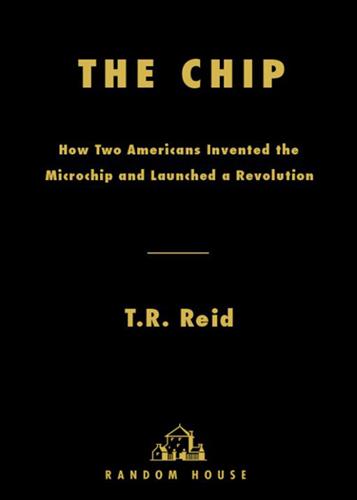
The Chip: How Two Americans Invented the Microchip and Launched a Revolution
by
T. R. Reid
Published 18 Dec 2007
Thomson himself. There he became familiar with Thomson’s conception of the structure of the atom—a theory known as the “raisin cake atom” because it posited a sort of sponge cake with electrons scattered about here and there like raisins. Next Bohr went to Manchester to work with another great physicist, Ernest Rutherford; there he learned of Rutherford’s “nuclear atom,” which posited a small nucleus set inside an amorphous cloud of electrons. Then, in 1913, Bohr set down his own picture of the atom—a hypothesis that has prevailed, with regular refinements, ever since. The “Bohr atom” is the atom that most adults today saw in their high school science books: the “solar system” model, with electrons swirling in concentric orbits around a central nucleus.
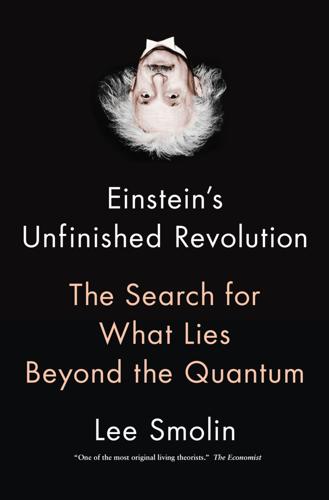
Einstein's Unfinished Revolution: The Search for What Lies Beyond the Quantum
by
Lee Smolin
Published 31 Mar 2019
Carbon has 6 electrons, uranium 92, for example. Atoms are electrically neutral, so if an atom contains, say, 6 electrons, that means if you remove those electrons you get a structure with 6 positive charges. Since electrons are so light, this structure, which we can call the nucleus, has most of the mass. In 1911 Ernest Rutherford determined that the nucleus of an atom is tiny, compared to the whole atom. If the atom is a small city, the nucleus is a marble. Shrunk into that tiny volume are all the positive charges and almost all the mass of an atom. The electrons orbit the nucleus in the vast empty space that is most of the atom.
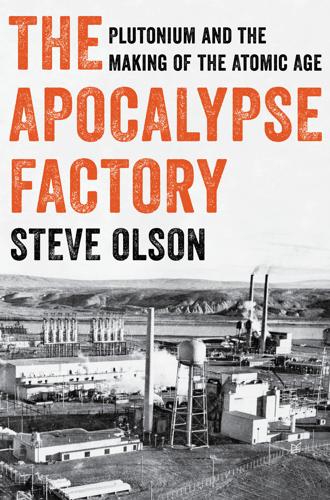
The Apocalypse Factory: Plutonium and the Making of the Atomic Age
by
Steve Olson
Published 28 Jul 2020
In 1933, Szilard was living at the Imperial Hotel in the Bloomsbury neighborhood of London and running an organization that he had cofounded to help refugee scholars escape from Nazi Germany. He was always adept at forecasting future developments and predicted, well before most people, that the rise of Hitler would lead Germany to war. On September 12, he read an article in The Times in which the physicist Ernest Rutherford was quoted as saying that anyone predicting the generation of energy from atomic nuclei was “talking moonshine.” The comment irritated Szilard. “How can anyone know what someone else might invent?” A few days later he was going for a walk in the neighborhood when he stopped for a red light at a crosswalk near the hotel.
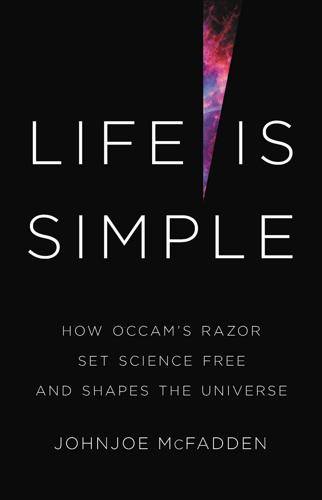
Life Is Simple: How Occam's Razor Set Science Free and Shapes the Universe
by
Johnjoe McFadden
Published 27 Sep 2021
That notion survived the swapping back and forth between the plenum theory and atomism in the ancient, medieval and modern world up until the late nineteenth and early twentieth century. Then, around the time that Einstein was writing his paper on the reality of the atom, Henri Becquerel (1852–1908) and, independently, Marie (1867–1934) and Pierre Curie (1859–1906) discovered radioactive decay of atoms into smaller parts. Further experiments by Ernest Rutherford (1871–1937) demonstrated that atoms consisted of a tiny positively charged nucleus, surrounded, at a distance 100,000 times the diameter of the nucleus, by a cloud of negatively charged electrons. Later experiments established that atomic nuclei are composed of both positively charged protons and electrically neutral neutrons, delivering our familiar and relatively simple picture of the atom that you might see printed on a T-shirt.

Human Compatible: Artificial Intelligence and the Problem of Control
by
Stuart Russell
Published 7 Oct 2019
Scientific breakthroughs are notoriously hard to predict. To get a sense of just how hard, we can look back at the history of another field with civilization-ending potential: nuclear physics. In the early years of the twentieth century, perhaps no nuclear physicist was more distinguished than Ernest Rutherford, the discoverer of the proton and the “man who split the atom” (figure 2[a]). Like his colleagues, Rutherford had long been aware that atomic nuclei stored immense amounts of energy; yet the prevailing view was that tapping this source of energy was impossible. On September 11, 1933, the British Association for the Advancement of Science held its annual meeting in Leicester.
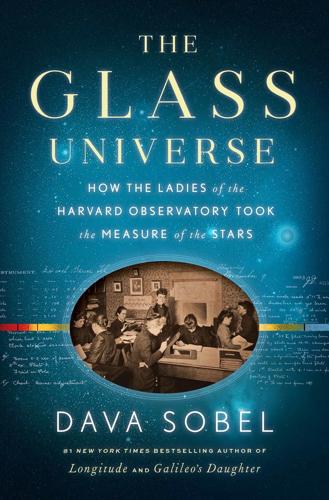
The Glass Universe: How the Ladies of the Harvard Observatory Took the Measure of the Stars
by
Dava Sobel
Published 6 Dec 2016
But Miss Payne hailed from Newnham College and the famed Cavendish Laboratory of Cambridge University, a place peopled with pioneers in these nascent fields. The Cavendish was home to Sir J. J. Thomson, recipient of the 1906 Nobel Prize in Physics for his discovery of the electron. Thomson’s disciple Ernest Rutherford, whom Miss Payne described as “a towering blond giant with a booming voice,” was the discoverer and first explorer of the atomic nucleus, and also the 1908 Nobel laureate in chemistry. During Miss Payne’s student days at the Cavendish, she had learned the complex architecture of the “Bohr atom” directly from Niels Bohr, the 1922 Nobelist in physics.

Human Frontiers: The Future of Big Ideas in an Age of Small Thinking
by
Michael Bhaskar
Published 2 Nov 2021
Known as Chicago Pile-1, it was a crude stack of graphite and uranium producing a controlled fission reaction, where the nuclei of a heavy element like uranium split into two. Progress on the X-10 Graphite Reactor had been astonishingly rapid. Just a decade before, in the early 1930s, the ideas behind nuclear power weren't even fully understood. Ernest Rutherford had only discovered the structure of the atom and so launched the nuclear age in physics in 1911. But in the wooded Tennessee hills scientists were bypassing the apocalyptic nightmare of Hiroshima and Nagasaki for what they hoped would bring an age of limitless energy. The reactor itself had been part of the Manhattan Project, the budget-busting effort to produce an atomic bomb.
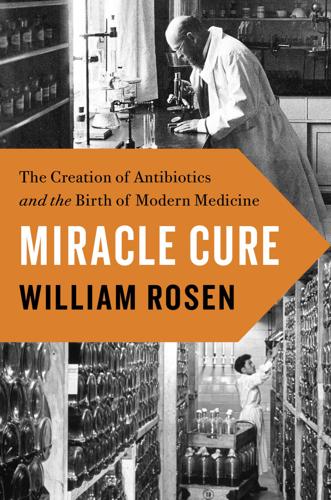
Miracle Cure
by
William Rosen
Published 14 Apr 2017
In this case, the money for the lab was a bequest from the grandson of William Perrins, the originator of the secret recipe in Lea & Perrins Worcestershire Sauce. * Since 1885, presidents of the Royal Society have served for five-year terms. In between Florey’s mentor, Charles Sherrington (1920–1925), and Hopkins (1930–1935), the president was another Nobel laureate: the physicist Ernest Rutherford. In fact, from 1915 to 1990, fifteen consecutive presidents of the Royal Society were Nobel Prize winners . . . and the streak was broken only with the election of Sir Michael Atiyah, a mathematician whose discipline is unrecognized by Alfred Nobel’s trust. * Of Chain’s downside—his Jewishness—Hopkins continued: “I feel that if his race and foreign origin will not be unwelcome in your department, you will import an acceptable and very able colleague in taking him.

The Coming Wave: Technology, Power, and the Twenty-First Century's Greatest Dilemma
by
Mustafa Suleyman
Published 4 Sep 2023
It’s just never been enough. It’s not that the containment problem hasn’t been recognized in history; it’s just that it has never been solved. Are there exceptions? Or does the wave always break everywhere, in the end? THE NUCLEAR EXCEPTION? On September 11, 1933, the physicist Ernest Rutherford argued to the British Association for the Advancement of Science in Leicester that “anyone who says that with the means at present at our disposal and with our present knowledge we can utilize atomic energy is talking moonshine.” Reading an account of Rutherford’s argument at a hotel in London, the Hungarian émigré Leo Szilard mulled it over at breakfast.
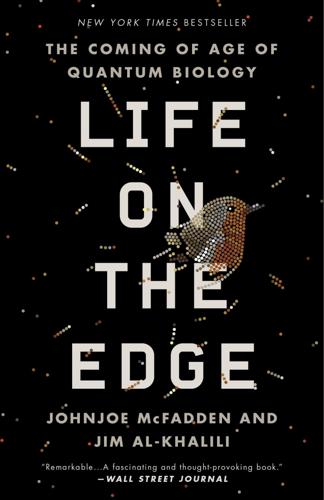
Life on the Edge: The Coming of Age of Quantum Biology
by
Johnjoe McFadden
and
Jim Al-Khalili
Published 14 Oct 2014
But there was also plenty of evidence that light behaves as a spread-out and continuous wave. So how can light be both lumpy and wavy? It didn’t seem to make sense at the time; at least, not within the framework of classical science. The next giant step was taken by the Danish physicist Niels Bohr, who turned up in Manchester in 1912 to work with Ernest Rutherford. Rutherford had just proposed his famous planetary model of the atom, consisting of a tiny dense nucleus at the center, surrounded by even tinier orbiting electrons. But nobody understood how atoms remained stable. According to standard electromagnetic theory, the negatively charged electrons would constantly emit light energy as they orbited the positively charged nucleus.

When Computers Can Think: The Artificial Intelligence Singularity
by
Anthony Berglas
,
William Black
,
Samantha Thalind
,
Max Scratchmann
and
Michelle Estes
Published 28 Feb 2015
Having three independent calculations resulting in roughly the same result made the conclusion appear sound. This was a major problem, however, because 20 million years did not appear to be nearly enough time for evolution to produce the different plants and animals we see today. Then in 1896, Henri Becquerel discovered radioactive decay, and in 1904 Ernest Rutherford proposed that radioactive decay provided a source of heat that would prevent the earth from cooling and therefore invalidate Kelvin’s analysis. This explanation is plausible and indeed is the main one cited today, yet it turns out to be wrong because there is not enough uranium in the earth to heat it significantly.
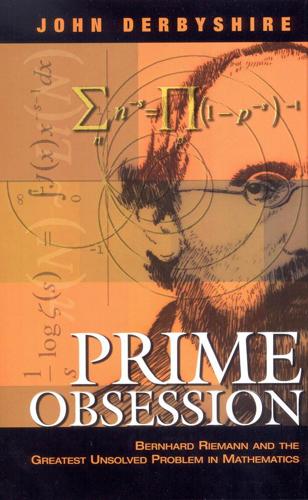
Prime Obsession:: Bernhard Riemann and the Greatest Unsolved Problem in Mathematics
by
John Derbyshire
Published 14 Apr 2003
(To simply say “the Pólya Conjecture” would be confusing, by the way, as there is another, different conjecture known by that name.) 18 NUMBER THEORY MEETS QUANTUM MECHANICS I n the last chapter I gave the mathI. ematical background and a little historical background to the Hilbert-Pólya Conjecture. The Conjecture was far ahead of its time and lay there untroubled for half a century. That was, however, a very eventful half-century in physics, the most eventful ever. In 1917, just around the time of the Conjecture, Ernest Rutherford observed the splitting of the atom; 15 years later, Cockroft and Walton split the atom by artificial means. This led in turn to Enrico Fermi’s work, to the first controlled chain reaction in 1942, and to the first nuclear explosion on July 16, 1945. “Splitting the atom” is, as all high-school physics teachers tell their classes, a misnomer.

What to Think About Machines That Think: Today's Leading Thinkers on the Age of Machine Intelligence
by
John Brockman
Published 5 Oct 2015
As Steve Omohundro, Nick Bostrom, and others have explained, the combination of value misalignment with increasingly capable decision-making systems can lead to problems—perhaps even species-ending problems, if the machines are more capable than humans. Some have argued that there’s no conceivable risk to humanity for centuries to come, perhaps forgetting that the interval of time between Ernest Rutherford’s confident assertion that atomic energy would never be feasibly extracted and Leó Szilárd’s invention of the neutron-induced nuclear chain reaction was less than twenty-four hours. For this reason, and the much more immediate reason that domestic robots and self-driving cars will need to share a good deal of the human value system, research on value alignment is well worth pursuing.

The Burning Answer: The Solar Revolution: A Quest for Sustainable Power
by
Keith Barnham
Published 7 May 2015
Its nucleus is just one proton and it also has one electron. He guessed that the pattern of the light emitted by hydrogen, the distinctive chord of hydrogen, would provide clues to the structure of the atom. The picture of an atom had recently changed dramatically as a result of experiments led by Ernest Rutherford, a New Zealander. Rutherford’s mother was English and a teacher. His father was a Scottish wheelwright. Both had emigrated to New Zealand and Ernest was the fourth child of twelve. Rutherford’s definitive experiments were performed at the University in Manchester before he followed in the footsteps of Maxwell, Rayleigh and Thomson by becoming Cavendish Professor at Cambridge.

These Strange New Minds: How AI Learned to Talk and What It Means
by
Christopher Summerfield
Published 11 Mar 2025
Skip Notes *1 For example, here is an argument from one 2021 paper: ‘We believe unchecked use of the Computational Metaphor contributes to […] harms by falsely attributing human-like capabilities to AI-labelled technologies, and aiding in a disregard for the complexity of social and human experiences’ (Baria and Cross, 2021). *2 The rude comments about biology and maths are both paraphrases of quotes by famous physicists (Ernest Rutherford and Richard Feynman respectively). *3 Lobina, 2023. 19. Duck or Parrot? A popular exceptionalist argument is that neural networks are incapable of ever knowing anything because they are just statistical models. Here is a prominent academic and highly outspoken LLM critic putting it bluntly in 2022: Neither LaMDA nor any of its cousins (GPT-3) are remotely intelligent.
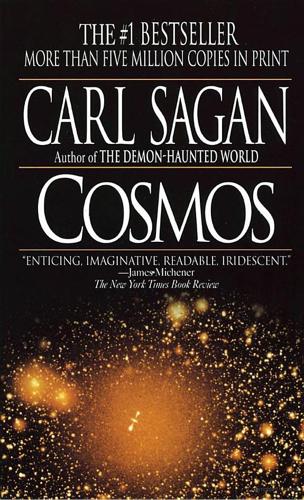
Cosmos
by
Carl Sagan
Published 1 Jan 1980
It would be clear from such a world, as it is beginning to be clear from ours, how our matter, our form and much of our character is determined by the deep connection between life and the Cosmos. *It had previously been thought that the protons were uniformly distributed throughout the electron cloud, rather than being concentrated in a nucleus of positive charge at the center. The nucleus was discovered by Ernest Rutherford at Cambridge when some of the bombarding particles were bounced back in the direction from which they had come. Rutherford commented: “It was quite the most incredible event that has ever happened to me in my life. It was almost as incredible as if you fired a 15-inch [cannon] shell at a piece of tissue paper and it came back and hit you.”

Culture and Prosperity: The Truth About Markets - Why Some Nations Are Rich but Most Remain Poor
by
John Kay
Published 24 May 2004
You can take an elevenhour direct flight from Auckland to Buenos Aires to see the two nations play international rugby. And they have many differences. The most famous Argentines are Eva Peron, movie-star wife of a populist dictator, and the skeptical writer Jorge Luis Borges. The most famous New Zealanders are Ernest Rutherford, who first split the atom (in England), and Edmund Hillary, who climbed Everest (in Nepal). The symbol of Argentina is the gaucho, of New Zealand the kiwi. And New Zealanders seem to have the same affection for Queen Elizabeth of New Zealand that Argentines had for Evita. But both are geographically peripheral countries.
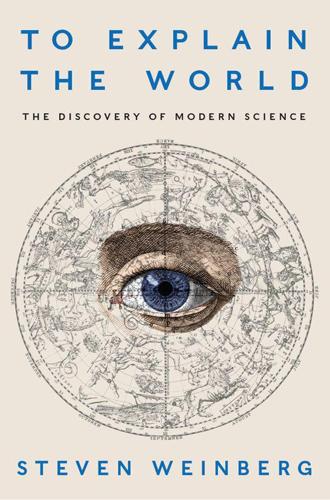
To Explain the World: The Discovery of Modern Science
by
Steven Weinberg
Published 17 Feb 2015
Responding to the experiments of Thomson and Perrin, the chemist Wilhelm Ostwald, who earlier had been skeptical about atoms, expressed his change of mind in 1908, in a statement that implicitly looked all the way back to Democritus and Leucippus: “I am now convinced that we have recently become possessed of experimental evidence of the discrete or grained nature of matter, which the atomic hypothesis sought in vain for hundreds and thousands of years.”4 But what are atoms? A great step toward the answer was taken in 1911, when experiments in the Manchester laboratory of Ernest Rutherford showed that the mass of gold atoms is concentrated in a small heavy positively charged nucleus, around which revolve lighter negatively charged electrons. The electrons are responsible for the phenomena of ordinary chemistry, while changes in the nucleus release the large energies encountered in radioactivity.
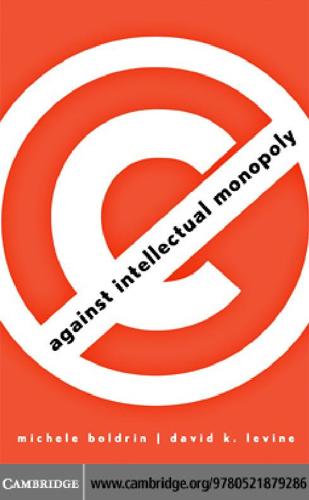
Against Intellectual Monopoly
by
Michele Boldrin
and
David K. Levine
Published 6 Jul 2008
With this exception, the details of my apparatus, which so closely resembles his, have been worked out quite.39 Talk about understatement and gentlemanliness! The fact is that Marconi was using established science at the time: long-run detection of Hertz waves was a widely studied topic. Marconi’s box was frontier engineering, certainly, but there is no real scientific discovery in his black box. Similar experiments were carried out by Ernest Rutherford at Cambridge’s Cavendish Laboratory as early as 1895–96. In describing Marconi’s equipment, which is extremely similar to that of Rutherford and Jackson, even in terms of the size of many parts, Hong concludes: “There was an element of ‘non-obviousness’ in Marconi’s solutions: his grounding40 of one pole of the transmitter and one pole of the receiver.”
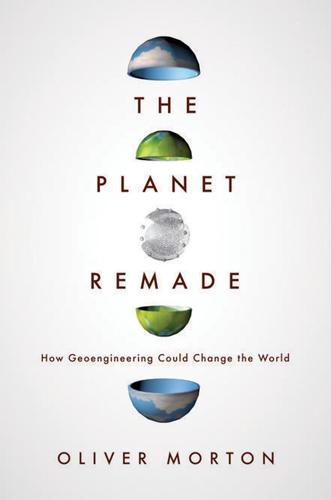
The Planet Remade: How Geoengineering Could Change the World
by
Oliver Morton
Published 26 Sep 2015
The nineteenth-century fin-de-siècle story of human empire coming to its limits was countered, even at the time of its telling, by stories in which those limits were themselves becoming a thing of the past. Radioactivity, in which individual atoms announce themselves to the world with palpable bursts of energy, was discovered in 1897. In 1903 Ernest Rutherford and Frederick Soddy came up with an explanation of the phenomenon: atoms of one element were turning into atoms of another, liberating some of their internal energy in the process. This ‘transmutation’ (Soddy, a chemist with a mystical streak, liked the word; Rutherford, a no-nonsense physicist, was wary of its alchemical overtones) showed that that internal energy must be prodigious.
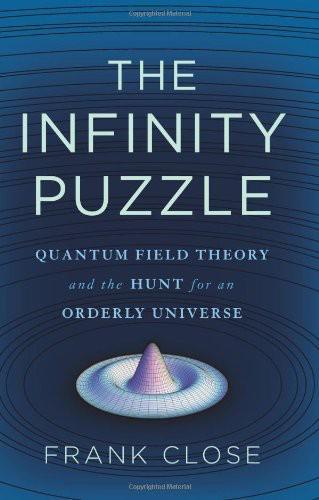
The Infinity Puzzle
by
Frank Close
Published 29 Nov 2011
It is even possible that totally new fermions, bound to one another by hitherto unknown forces—as in a theory known as “technicolor”— might be the answer.1 The exciting feature is that, until the experiments are done, we do not know which if any of these will be revealed as the source of electroweak symmetry breaking. Whatever awaits us a century after Ernest Rutherford first discovered the atomic nucleus, which revealed atomic structure and led to the modern science of particle physics, the modern conceit is that the heat of the Big Bang congealed into matter and antimatter in perfect symmetry, the symmetry becoming hidden as the universe cooled, thereby providing the structures that Rutherford explored.

The Precipice: Existential Risk and the Future of Humanity
by
Toby Ord
Published 24 Mar 2020
These possibilities are hard to discern through the haze of distance; it is extremely difficult to tell which new technologies will be possible, what form they will take when mature, or the context of the world into which they will arrive. And this veil may not lift until the new technologies are right upon us. For even the best experts or the very inventors of the technology can be blindsided by major developments. One night in 1933, the world’s pre-eminent expert on atomic science, Ernest Rutherford, declared the idea of harnessing atomic energy to be “moonshine.” And the very next morning Leo Szilard discovered the idea of the chain reaction. In 1939, Enrico Fermi told Szilard the chain reaction was but a “remote possibility,” and four years later Fermi was personally overseeing the world’s first nuclear reactor.
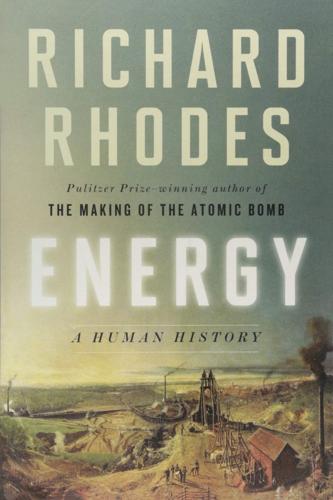
Energy: A Human History
by
Richard Rhodes
Published 28 May 2018
But the human world still largely lingered in the dark for half the earth’s each turning. There were remedies for that condition as well: oils, rushes, tallow, the fat of pigs, coal gas, whales. All would serve in their time. * * * I. Two centuries later, the greatest physicists of the early twentieth century—Ernest Rutherford, Albert Einstein, and Niels Bohr—would similarly dismiss the possibility of splitting the atom to release nuclear energy as “moonshine.” II. Sir William Congreve developed the first British military rockets from Indian models in 1805. It was their “red glare” over Fort McHenry during the War of 1812 that Francis Scott Key evoked in his “The Star-Spangled Banner.”

Coders: The Making of a New Tribe and the Remaking of the World
by
Clive Thompson
Published 26 Mar 2019
AI creators have vastly more to invent before they can get a machine that can truly reason. Sure, Bostrom writes. But these breakthroughs could emerge with surprising speed. This is the world of code, after all, where a single aha insight can take an algorithm from “not working” to “working” in a few minutes. In 1933, the physicist Ernest Rutherford pooh-poohed the idea of nuclear energy as impractical, but merely a decade later, the US was creating nuclear reactors and setting off atom bombs. Back in the early ’00s, even AI experts would have scoffed if you’d told them a Go-playing computer was a few years away. And companies today—particularly in the US and China—are pouring billions into AI.
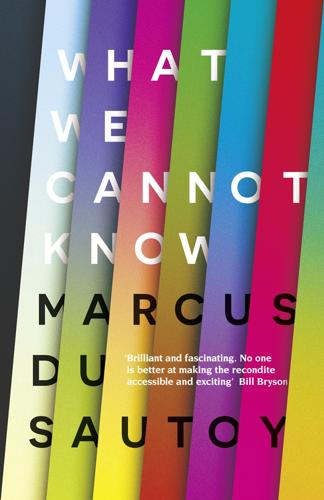
What We Cannot Know: Explorations at the Edge of Knowledge
by
Marcus Du Sautoy
Published 18 May 2016
The positively charged part of the atom, which was more massive than the negative electron, formed the pudding making up the bulk of the atom, while the electrons were the tiny fruit inside. Then the age of the bombardment of the atom began which would eventually lead to the ultimate atom smasher: the Large Hadron Collider at CERN. The New Zealand-born British physicist Ernest Rutherford is generally credited with the discovery of the proton, the particle that was the building block for all these positive particles that Thomson had investigated. Rutherford became fascinated by the new subject of radioactivity. Uranium atoms seemed to be spitting out particles that could be picked up by photographic plates.
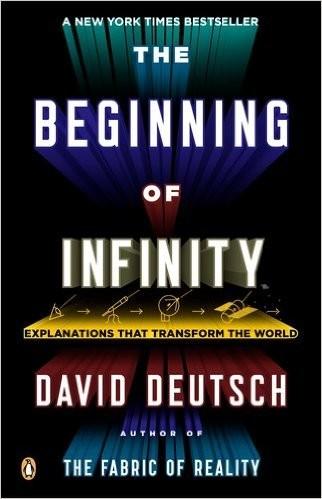
The Beginning of Infinity: Explanations That Transform the World
by
David Deutsch
Published 30 Jun 2011
Yet, even at those unimaginable distances, we are confident that we know what makes stars shine: you will be told that they are powered by the nuclear energy released by transmutation – the conversion of one chemical element into another (mainly hydrogen into helium). Some types of transmutation happen spontaneously on Earth, in the decay of radioactive elements. This was first demonstrated in 1901, by the physicists Frederick Soddy and Ernest Rutherford, but the concept of transmutation was ancient. Alchemists had dreamed for centuries of transmuting ‘base metals’, such as iron or lead, into gold. They never came close to understanding what it would take to achieve that, so they never did so. But scientists in the twentieth century did. And so do stars, when they explode as supernovae.

Scale: The Universal Laws of Growth, Innovation, Sustainability, and the Pace of Life in Organisms, Cities, Economies, and Companies
by
Geoffrey West
Published 15 May 2017
Consequently, an underlying thread running throughout the book has been an emphasis on developing a more quantitative, computational, predictive understanding based on fundamental principles as a complement to the traditional, more qualitative, narrative arguments that tend to dominate the social, biological, medical, and business literature. Nevertheless, there isn’t a single equation in the book. I took very seriously the admonition of Lord Ernest Rutherford, the famous discoverer of atomic nuclei—“the father of the nuclear age”—that “a theory that you can’t explain to a bartender is probably no damn good.” I’m not entirely convinced that he was right, but I did heed the spirit of what he said. I hope, therefore, that I have succeeded in some small way in keeping the arguments and explanations at an appropriately nontechnical level so that the proverbial “intelligent layperson” didn’t have too much difficulty in following them.
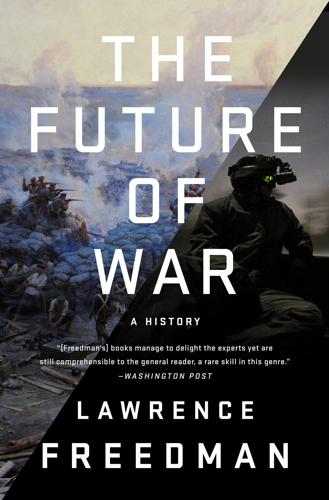
The Future of War
by
Lawrence Freedman
Published 9 Oct 2017
Always on the lookout for scientific innovations to help the cause of political progress, he seized upon reports in the early 1900s of breakthroughs in the understanding of atomic structures. His guide was Frederick Soddy, a pioneering student of radioactivity who had gained his reputation while working with physicist Ernest Rutherford at McGill University in Canada. The two had shown that there were circumstances in which atoms might break up, in the process releasing large amounts of energy. Rutherford and Soddy understood how much potential energy might be stored in small amounts of material but could not see how this might be unleashed.
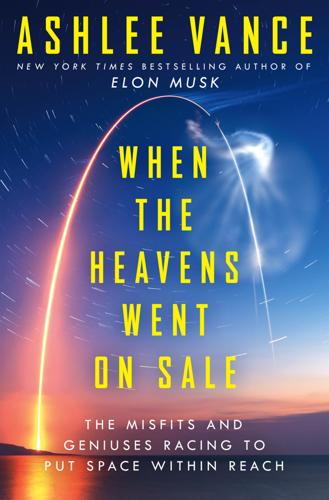
When the Heavens Went on Sale: The Misfits and Geniuses Racing to Put Space Within Reach
by
Ashlee Vance
Published 8 May 2023
Rocket Lab had made the machines of carbon fiber instead of aluminum or stainless steel in a bid to improve the rocket’s strength while keeping it lightweight. The black material gave the rocket a punk, polished look. It put the sexy back into space phalluses. Electron would be powered with the help of nine of Rocket Lab’s Rutherford engines, named after the famous Kiwi scientist Ernest Rutherford.* The engines were works of art. Pieces of twisted metal were arranged around electronics with precision and care. The factory itself was organized in the same exacting way, with all the tools categorized and placed on workbenches just so. Beck, who was thirty-nine at the time, materialized in the factory with minimal pomp and circumstance.

Adaptive Markets: Financial Evolution at the Speed of Thought
by
Andrew W. Lo
Published 3 Apr 2017
We’ve seen from our excursion into neuroscience and evolutionary theory that biology is much more relevant for human behavior and bounded rationality than theories inspired by mathematical physics. In fact, most real world economic phenomena simply look more like biology than physics; it’s very rare to find any economic ideas that conform perfectly to elegant mathematical derivations. The physicist Ernest Rutherford scornfully dismissed every field that wasn’t physics as mere “stamp collecting.” But biology has strong methodological advantages over physics in studying economics. Economic concepts translate naturally to their biological counterparts, and vice versa, such as the allocation of scarce resources and the measurement of diversity in a population.

Architects of Intelligence
by
Martin Ford
Published 16 Nov 2018
STUART J. RUSSELL: These kinds of breakthroughs have nothing to do with bigger datasets or faster machines, and so we can’t make any kind of quantitative prediction about when they’re going to occur. I always tell the story of what happened in nuclear physics. The consensus view as expressed by Ernest Rutherford on September 11th, 1933, was that it would never be possible to extract atomic energy from atoms. So, his prediction was “never”, but what turned out to be the case was that the next morning Leo Szilard read Rutherford’s speech, became annoyed by it, and invented a nuclear chain reaction mediated by neutrons!

Why the Allies Won
by
Richard Overy
Published 29 Feb 2012
In the spring of 1939 German physicists grasped that the energy released in the fission of uranium would be sufficient not only to produce a new source of fuel, but also to create an explosion that would dwarf those produced by conventional weapons. On 24 April 1939 the Hamburg chemist Paul Harteck, a Nazi Party member who had worked in Cambridge in the 1920s with Ernest Rutherford, the New Zealand physicist who first split the atom, wrote to the Army Ordnance Office with news of the potential new weapon: ‘That country’, he warned, ‘which first makes use of it has an unsurpassable advantage over the others.’71 The same month the German Education Ministry set up a high level nuclear research team; in September many of its resources were absorbed by an even larger project funded by the German army.
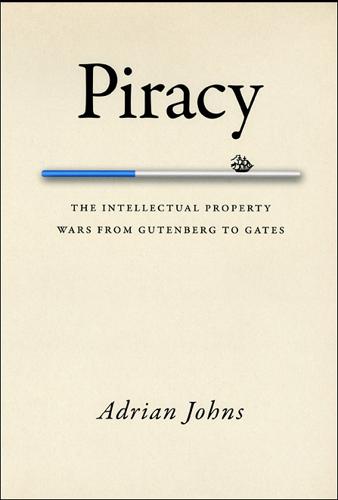
Piracy : The Intellectual Property Wars from Gutenberg to Gates
by
Adrian Johns
Published 5 Jan 2010
They had been motivated not by the desire to listen to broadcasting, which had not existed, but by curiosity about the properties of wireless, the ether, and the future of communication. The development of wireless had taken place largely at their hands. Moreover, the figure of the experimenter as a modest, plainspoken, virtuous worker of wonders commanded widespread respect – before Big Science, it seemed that not much separated the radio researcher from a figure like Ernest Rutherford, who had risen from colonial origins to the pinnacle of scientific achievement. Not least, that figure was seen as a peculiarly British individual, personifying hope for the empire’s future in the face of German discipline and American teamwork. Indeed, Kellaway had found himself facing parliamentary challenges on this score even before the BBC plan was finalized.
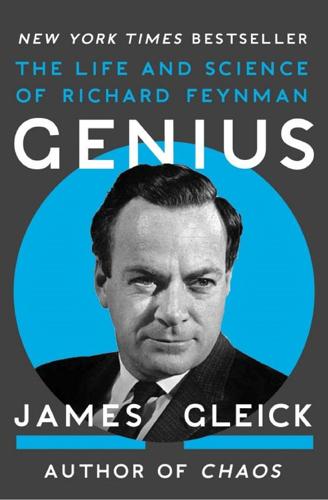
Genius: The Life and Science of Richard Feynman
by
James Gleick
Published 1 Jan 1992
He, too, followed the relationship between wavelength and current to an inevitable mathematical conclusion: that light itself behaves not as a continuous wave but as a broken succession of lumps when it interacts with electrons. These were dubious claims. Most physicists found Einstein’s theory of special relativity, published the same year, more palatable. But in 1913 Niels Bohr, a young Dane working in Ernest Rutherford’s laboratory in Manchester, England, proposed a new model of the atom built on these quantum underpinnings. Rutherford had recently imagined the atom as a solar system in miniature, with electrons orbiting the nucleus. Without a quantum theory, physicists would have to accept the notion of electrons gradually spiraling inward as they radiated some of their energy away.

Wired for War: The Robotics Revolution and Conflict in the 21st Century
by
P. W. Singer
Published 1 Jan 2010
At the time, physicists thought radioactive elements like uranium only released energy via a slow decay over thousands of years. Wells described a way in which the energy might be bundled up to make an explosion powerful enough to destroy a city. Of course, at the time, most scoffed; the famed scientist Ernest Rutherford even called Wells’s idea “moonshine.” One reader who differed was Leó Szilárd, a Hungarian scientist. Szilárd later became a key part of the Manhattan Project and credited the book with giving him the idea for the nuclear “chain reaction.” Indeed, he even mailed a copy of Wells’s book to Hugo Hirst, one of the founders of General Electric, with a cover note that read, “The forecast of the writers may prove to be more accurate than the forecast of the scientists.”

Global Catastrophic Risks
by
Nick Bostrom
and
Milan M. Cirkovic
Published 2 Jul 2008
The key implication for our purposes is that an AI might make a huge jump in intelligence after reaching some threshold of criticality. 3 24 Global catastrophic risks One often encounters scepticism about this scenario - what Good (1965) called an 'intelligence explosion' - because progress in AI has the reputation of being very slow. At this point, it may prove helpful to review a loosely analogous historical surprise. (What follows is taken primarily from Rhodes, 1986.) In 1933, Lord Ernest Rutherford said that no one could ever expect to derive power from splitting the atom: 'Anyone who looked for a source of power in the transformation of atoms was talking moonshine.' At that time laborious hours and weeks were required to fission a handful of nuclei. Flash forward to 1942, in a squash court beneath Stagg Field at the University of Chicago.
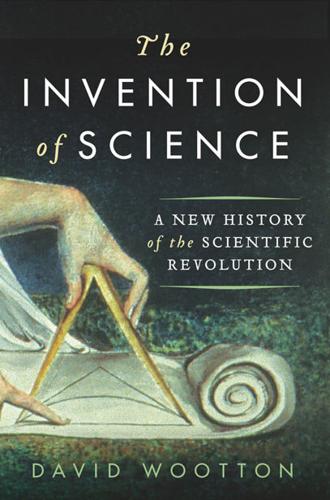
The Invention of Science: A New History of the Scientific Revolution
by
David Wootton
Published 7 Dec 2015
Clark, an expert on all things seventeenth century, and the medieval historian M. M. Postan had lectured immediately before Butterfield. It was in Cambridge that Isaac Newton (1643–1727) had written his Philosophiæ naturalis principia mathematica, or Mathematical Principles of Natural Philosophy (1687), and here that Ernest Rutherford (1871–1937) had split the atomic nucleus for the first time, in 1932. Here, the historians were acknowledging, they were under a particular obligation to study the history of science. They were also keen to insist that the history of science be done by historians, not by scientists.i 2 The historians and the scientists at Cambridge shared a common education: Latin was a compulsory entrance requirement.
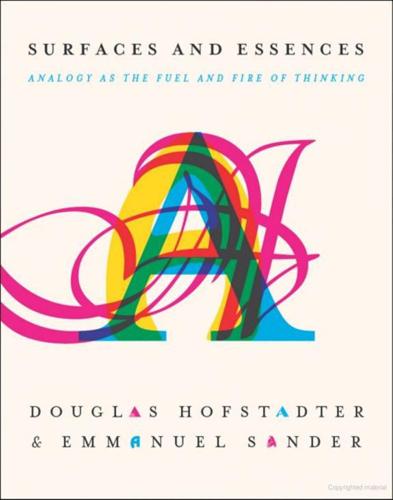
Surfaces and Essences
by
Douglas Hofstadter
and
Emmanuel Sander
Published 10 Sep 2012
while pointing with one’s finger would be deserving of a Nobel Prize in physics, and yet such a banal act is remarkably close to the profound analogy that links the atom and the solar system. That discovery was made collectively, around the turn of the twentieth century, by brilliant scientists, both experimentalists and theoreticians, from many countries; among them were Hantaro Nagaoka, Jean Perrin, Arthur Haas, Ernest Rutherford, John Nicholson, and Niels Bohr. The images at the heart of this analogy were extremely elusive at that time, and it took remarkable intellectual daring, supported by a large number of empirical findings, to come up with such bold ideas. And yet only a few decades later, the educational system had fully integrated these once-revolutionary ideas, and it is in this sense that understanding the analogy between the solar system and the atom’s structure is not all that different from understanding analogies that we all make, day in and day out, totally off the cuff, when we say “here” or “there”.
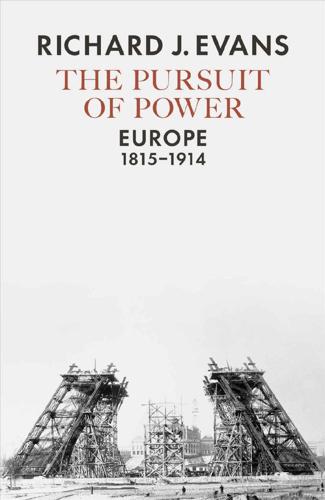
The Pursuit of Power: Europe, 1815-1914
by
Richard J. Evans
Published 31 Aug 2016
Microscopes and telescopes became more sophisticated, chemical dyes made it easier to observe microbes and bacilli, and by the end of the century scientific research and education had become fully professional. By this time, British research in physics had reached an advanced stage: James Clerk Maxwell (1831–79), Joseph Thomson (1856–1940), and the New Zealander Ernest Rutherford (1871–1937) were responsible respectively for the theory of electromagnetism (1861), the discovery of the electron (1897), and the concept of the radioactive half-life (1899). Overall, the number of university teaching posts in science and technology in Britain, excluding medicine, rose from sixty in 1850 to 400 half a century later.

The Rough Guide to New Zealand: Travel Guide eBook
by
Rough Guides
Published 1 Jan 2024
The old library (1915) now serves as the Central Art Gallery, with revolving exhibitions from leading contemporary New Zealand artists. Rutherford’s Den 2 Worcester Blvd • Wed–Sun 10am–5pm (last entry 4.30pm), also Mon & Tues 2.30–5pm during school term • Charge • www.rutherfordsden.org.nz Housed in the venerable Clock Tower Building (1877), Rutherford’s Den honours Nobel Prize-winning atomic nucleus discoverer Ernest Rutherford (1871–1937), whose work led to the invention of television, radio, sonar and telephones (he’s also commemorated on the $100 banknote). Inside, hands-on exhibits bring to life the great man’s work in the actual rooms where Rutherford studied in the early 1890s. Born near Nelson, New Zealand, Rutherford spent his later career in Canada and the UK, and was awarded the Nobel Prize in 1908.